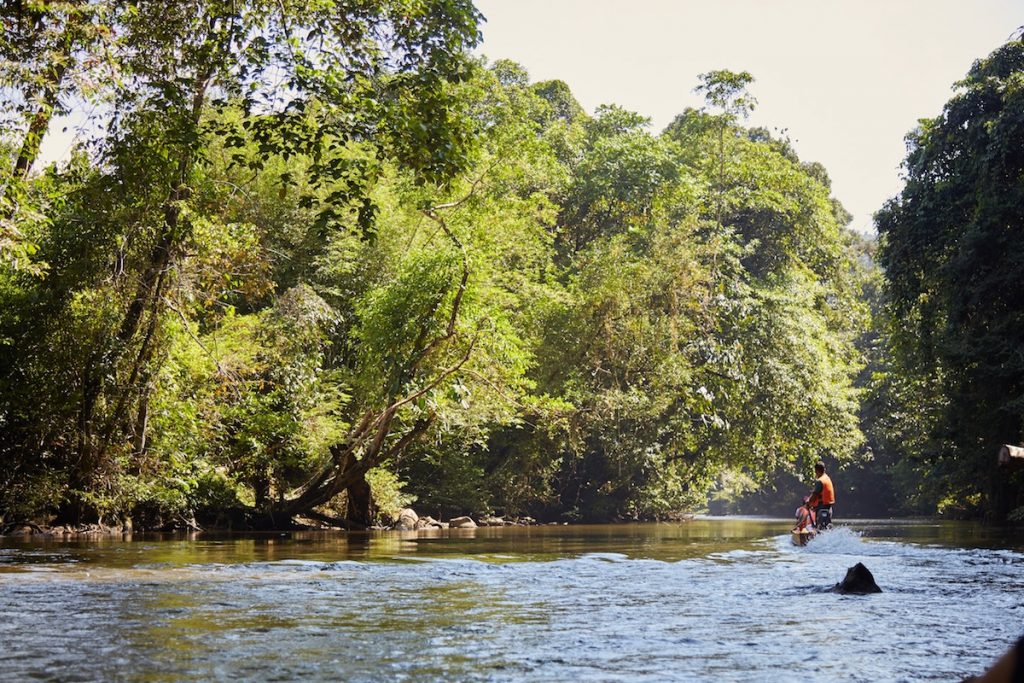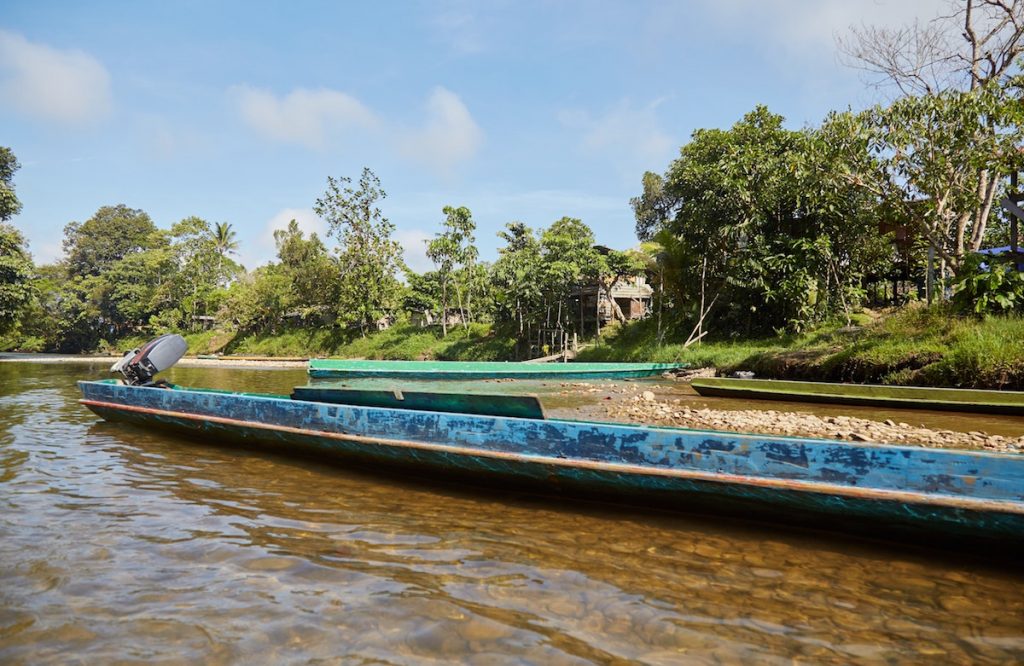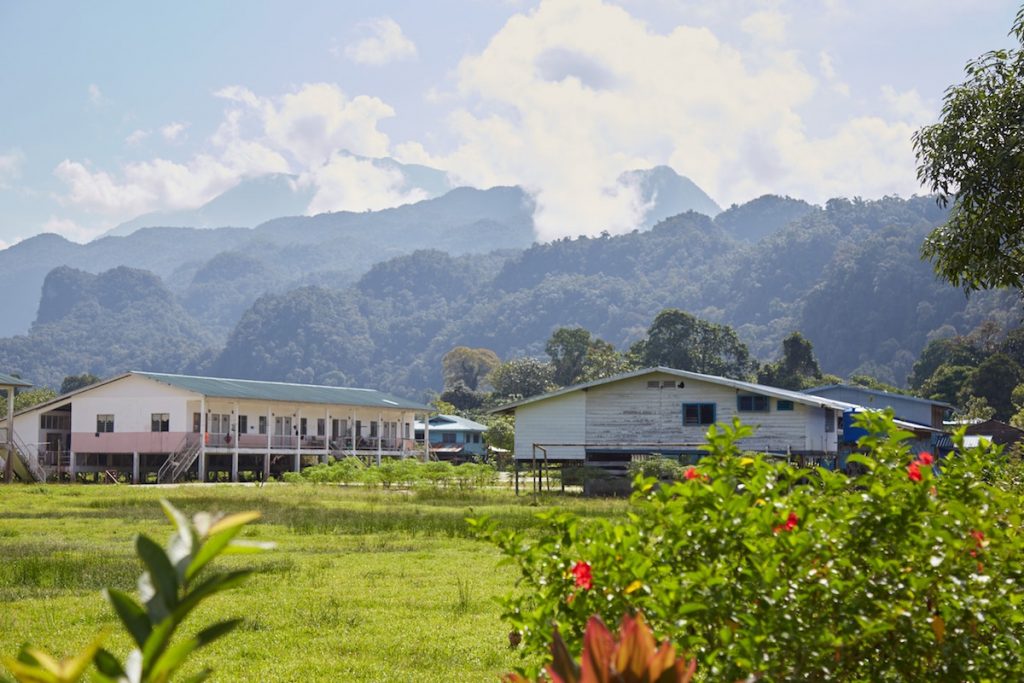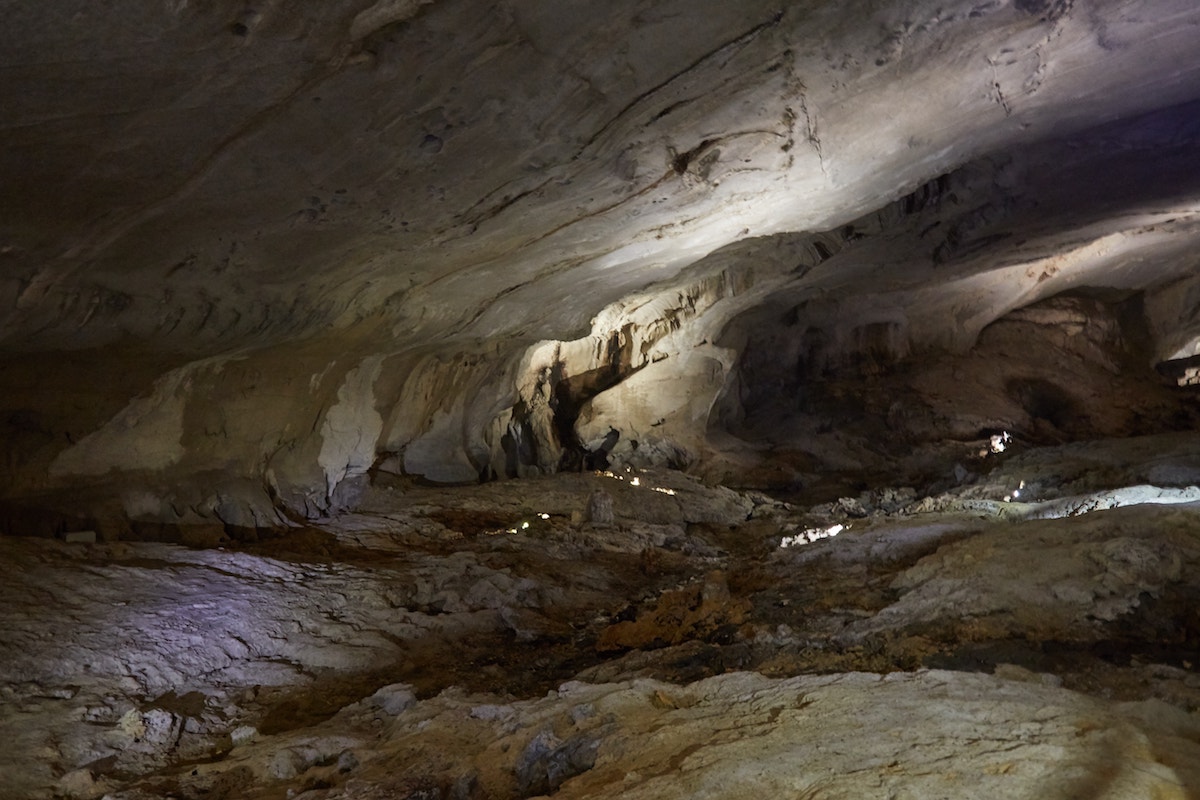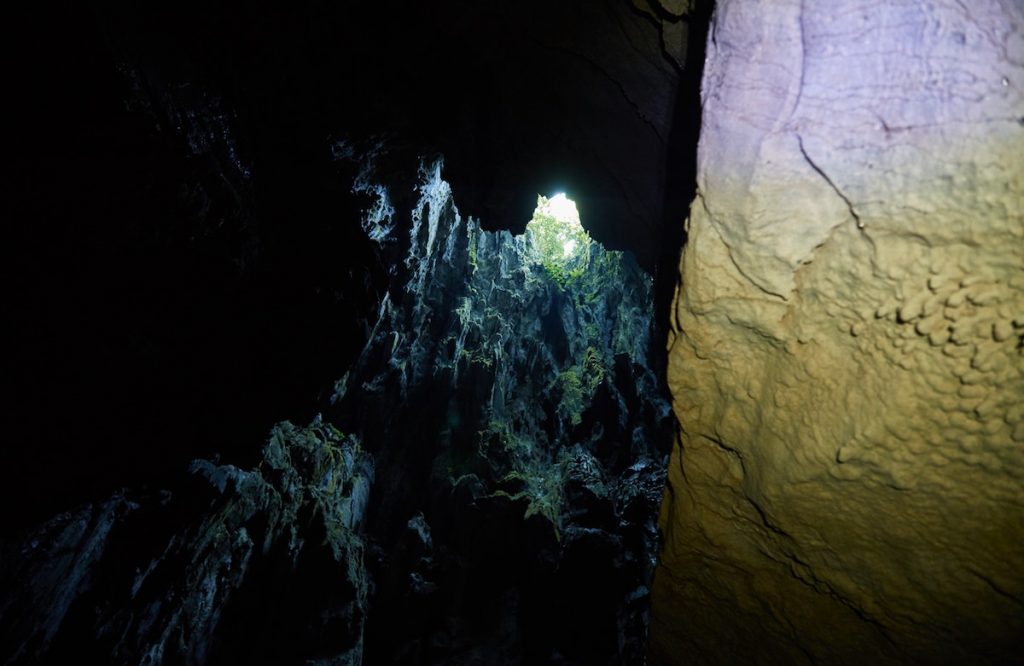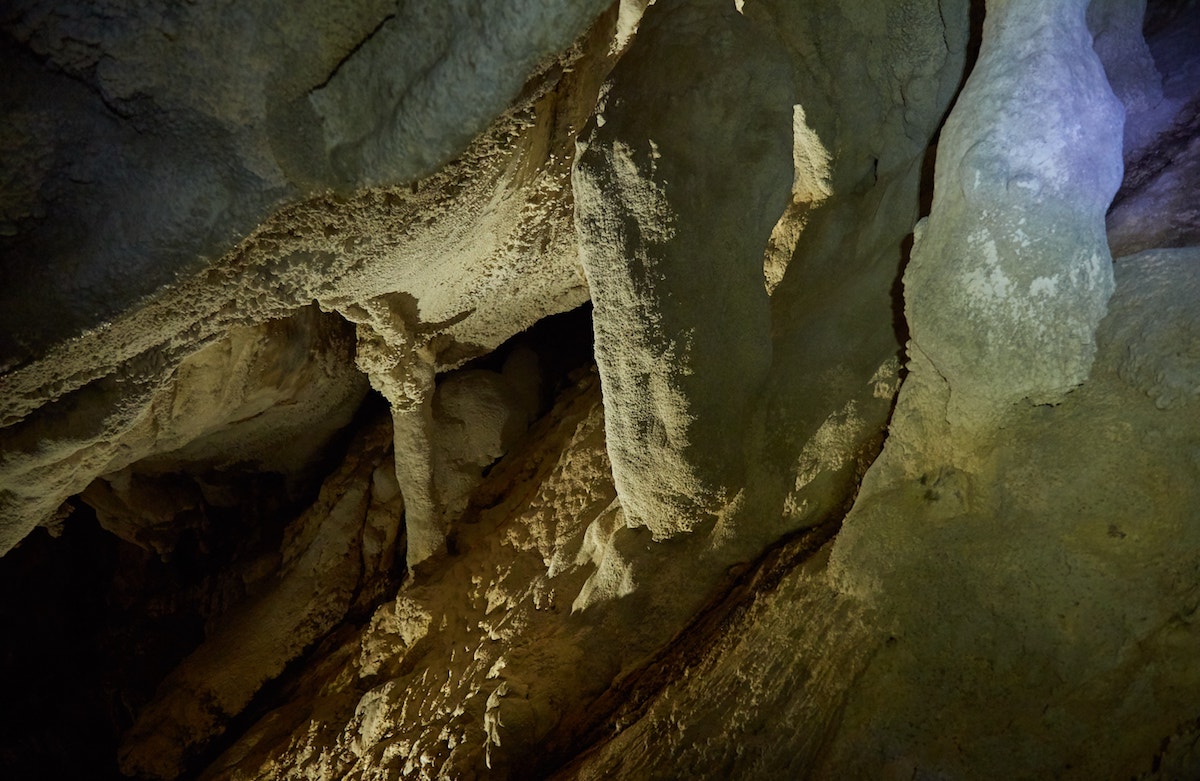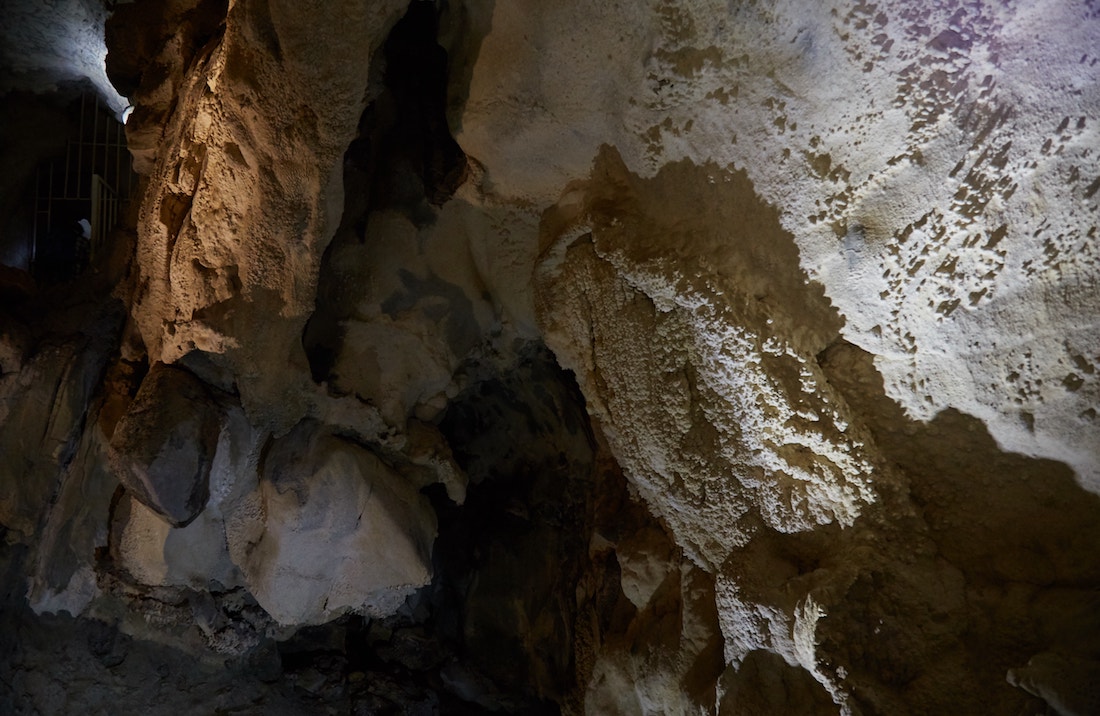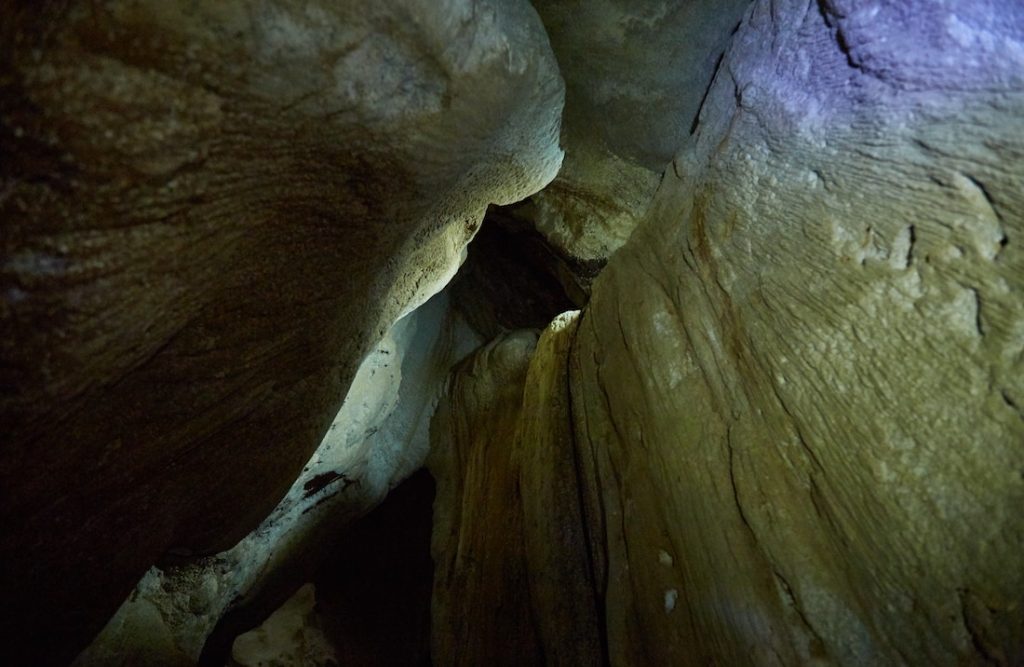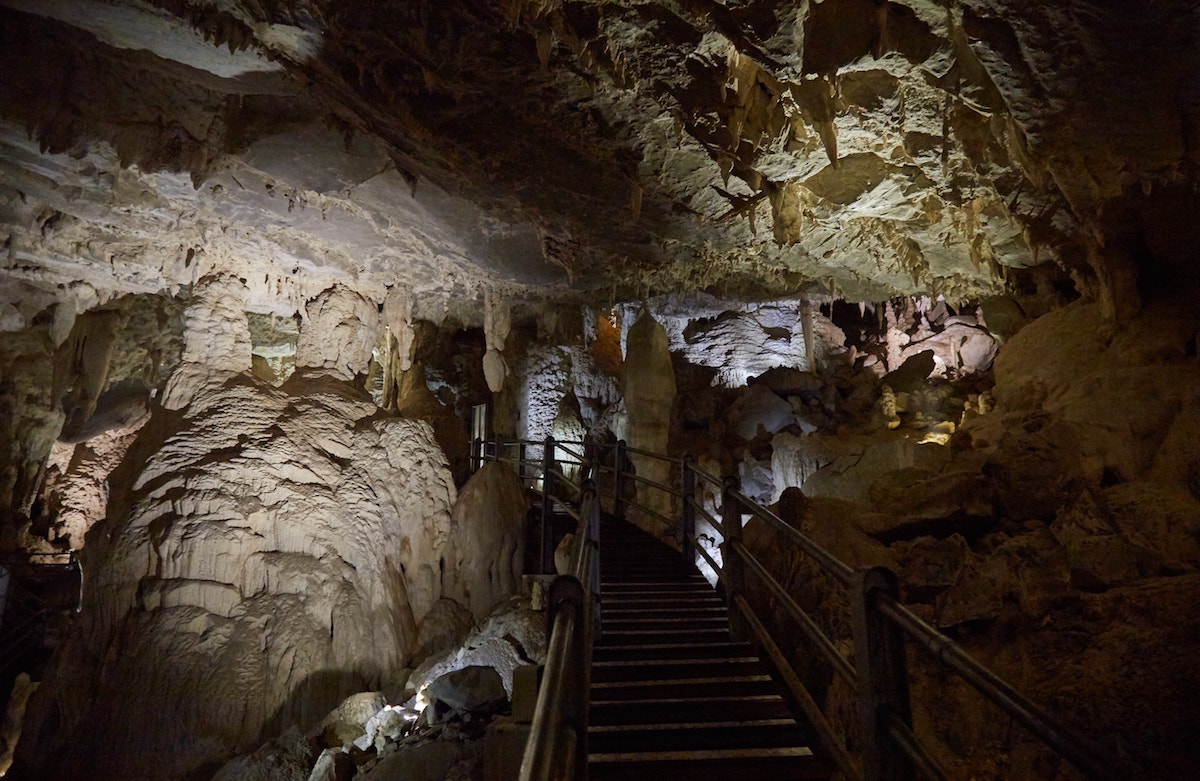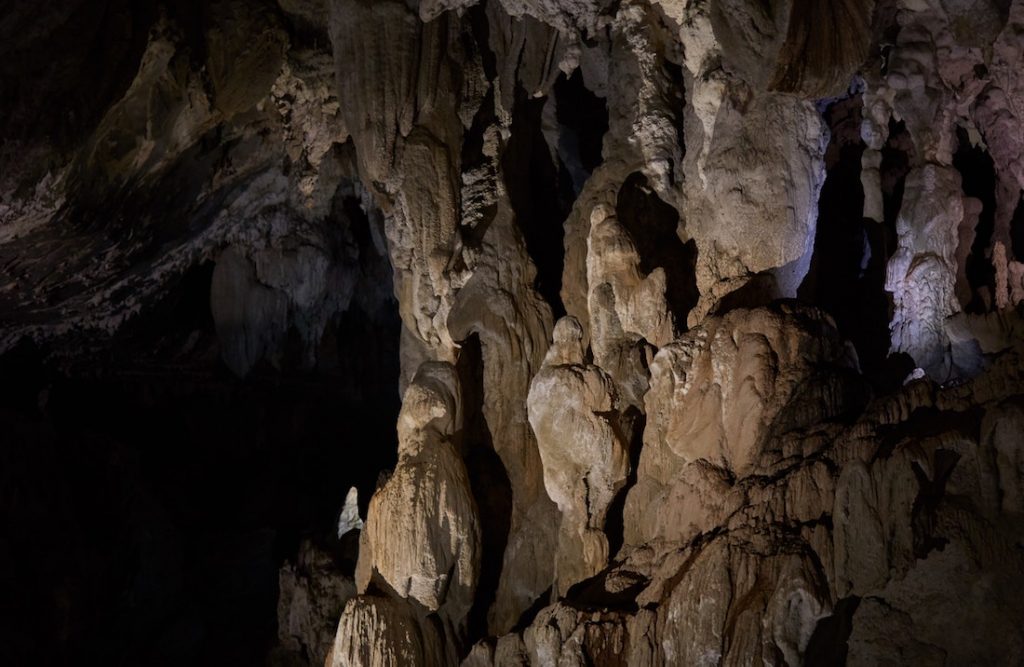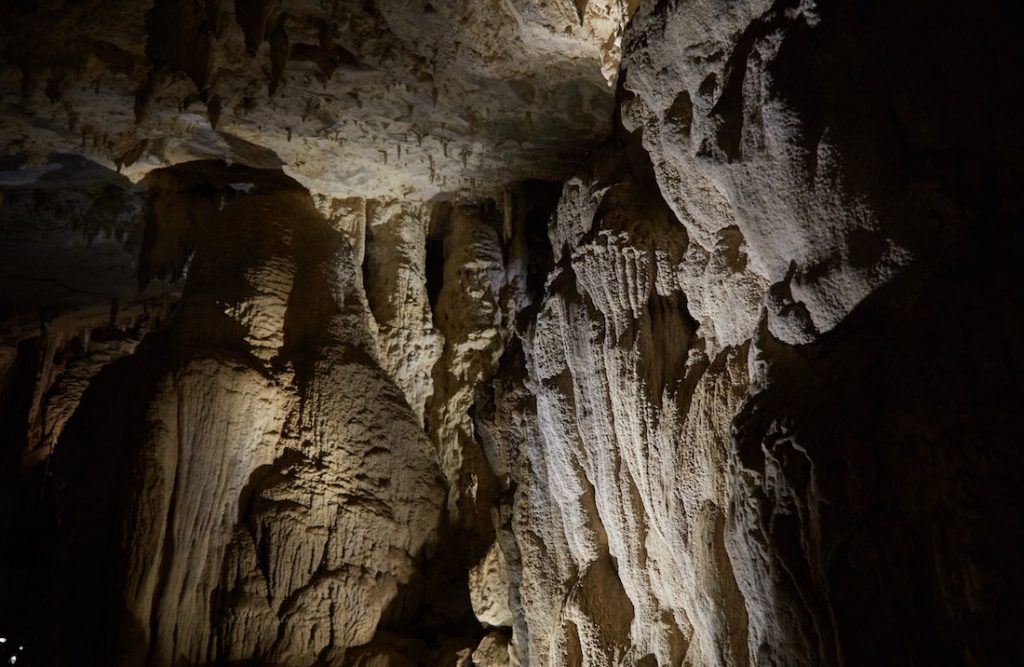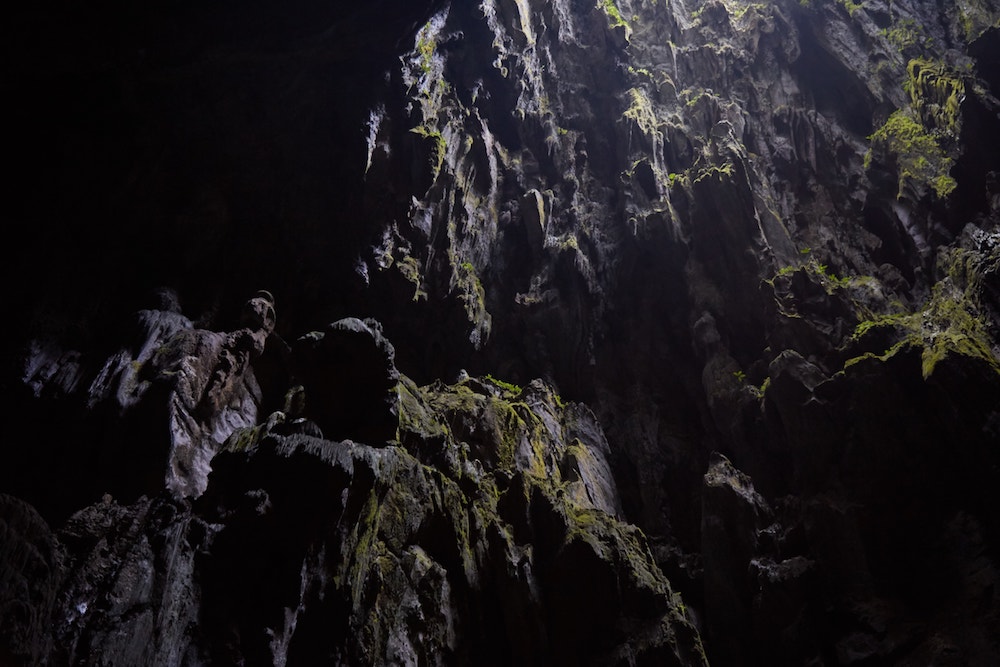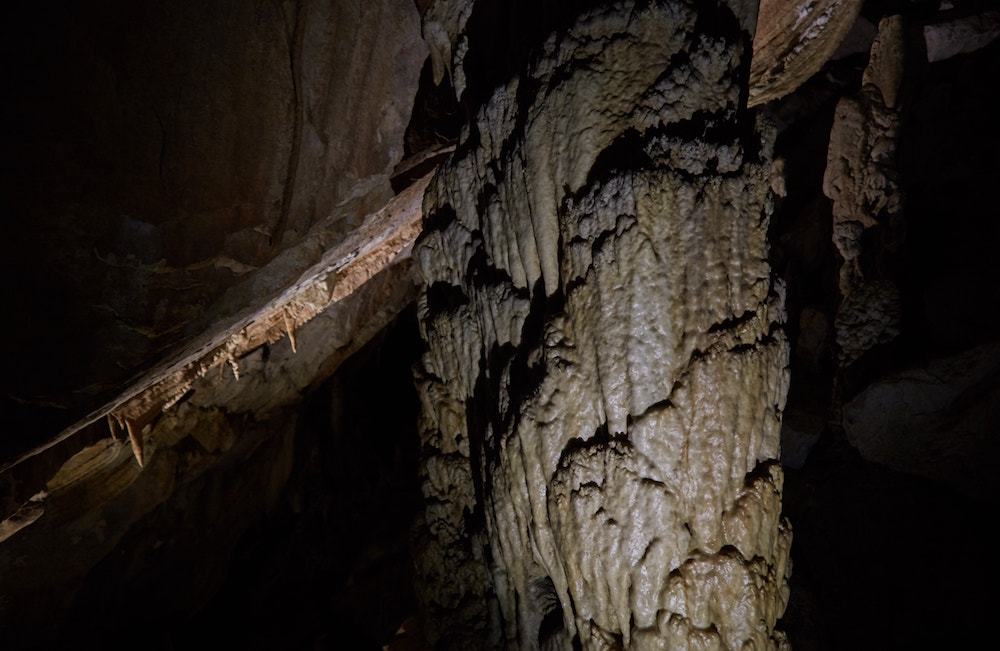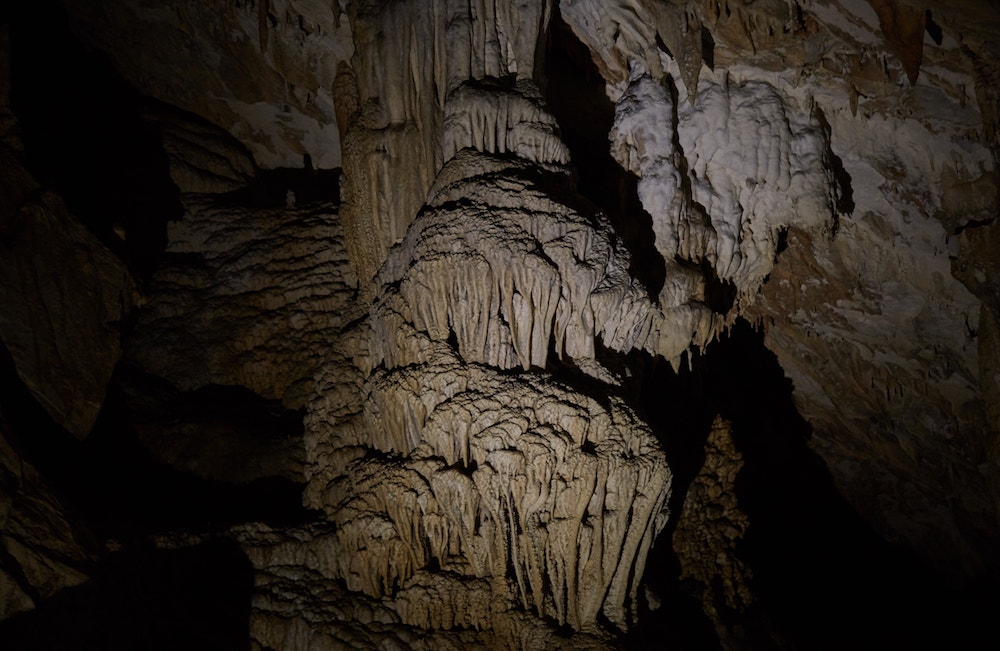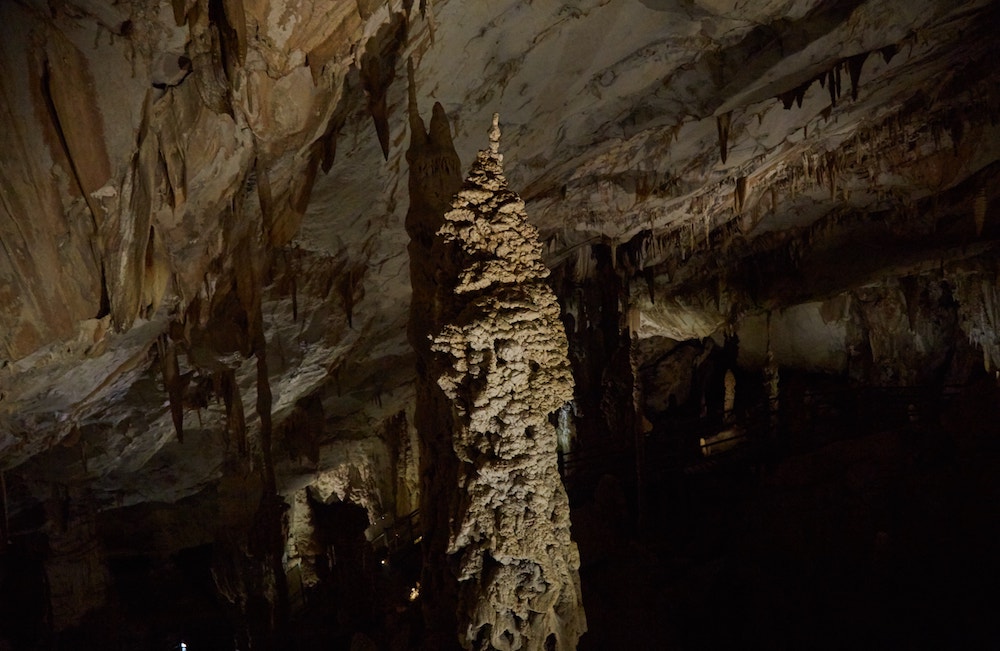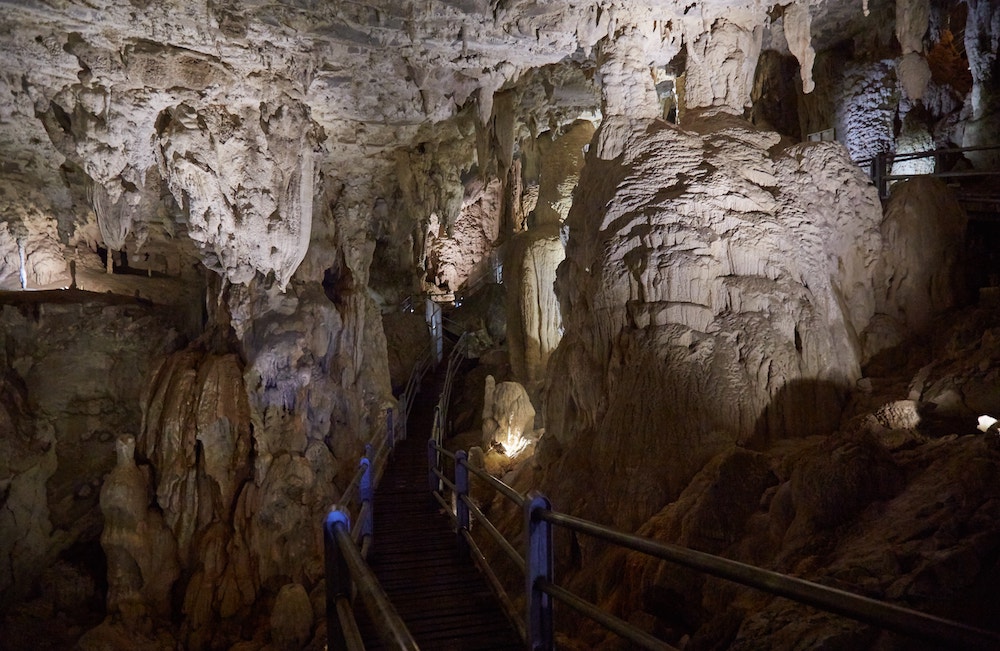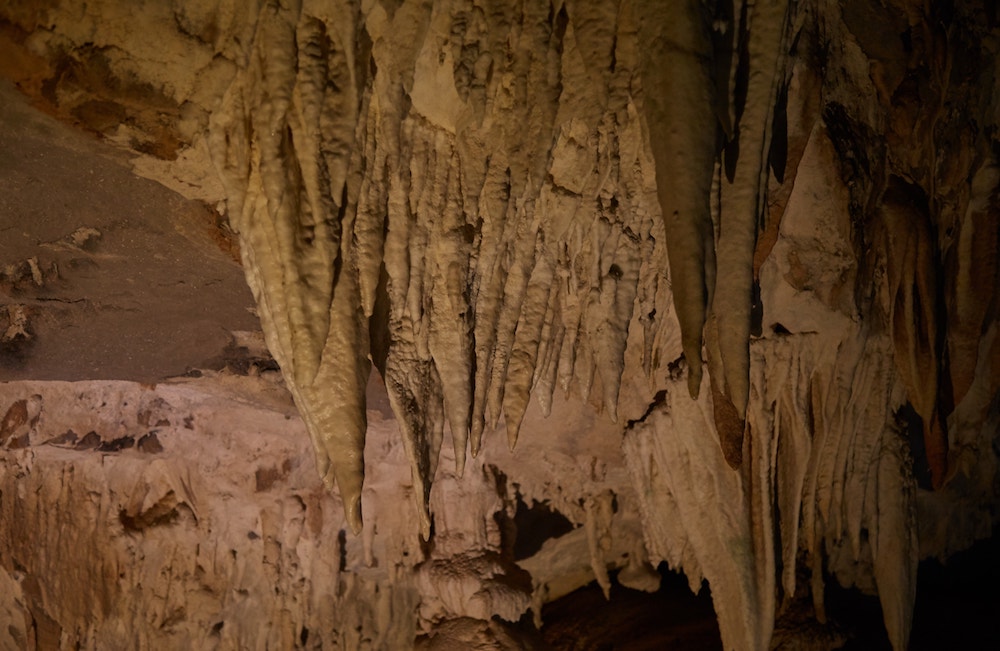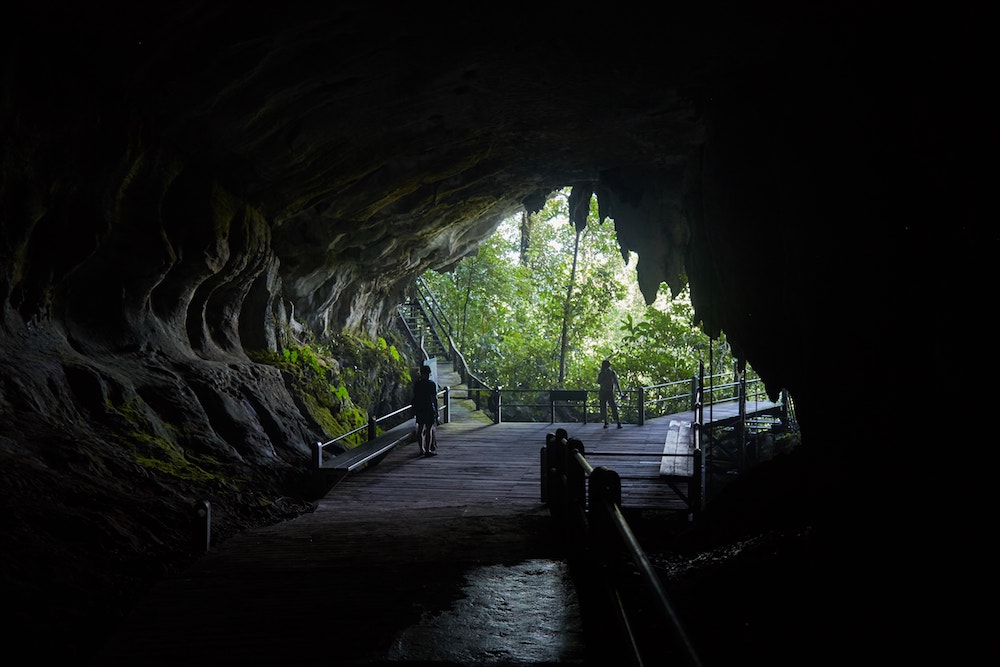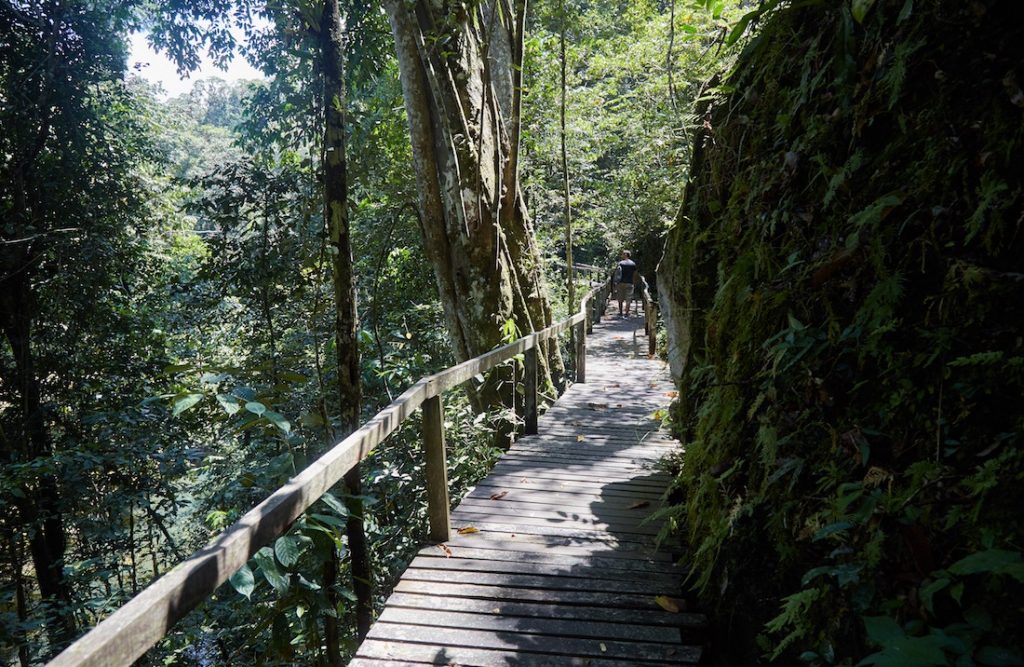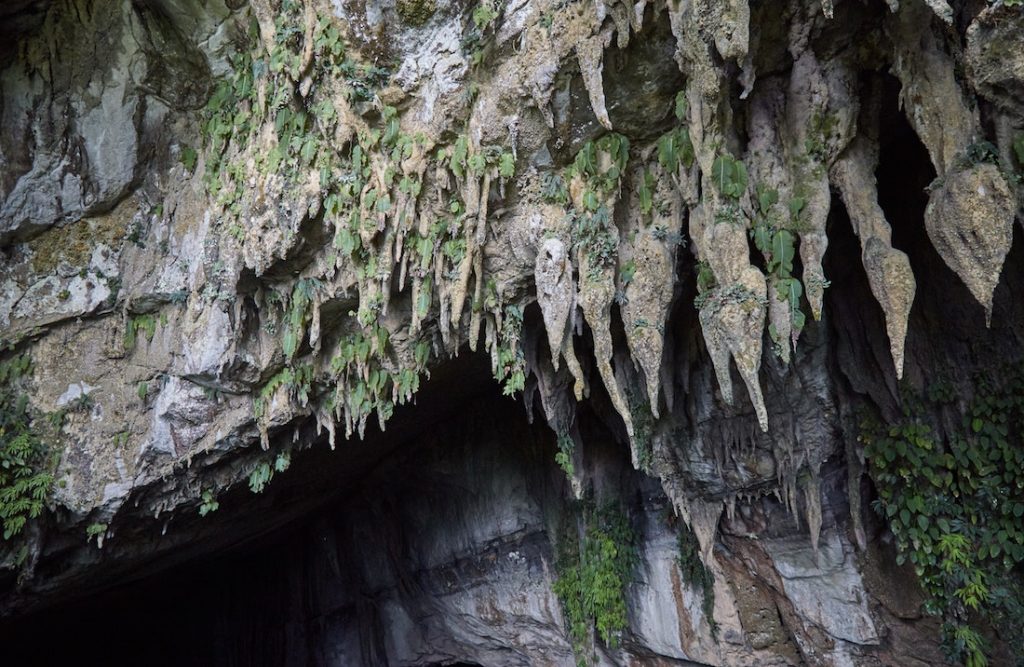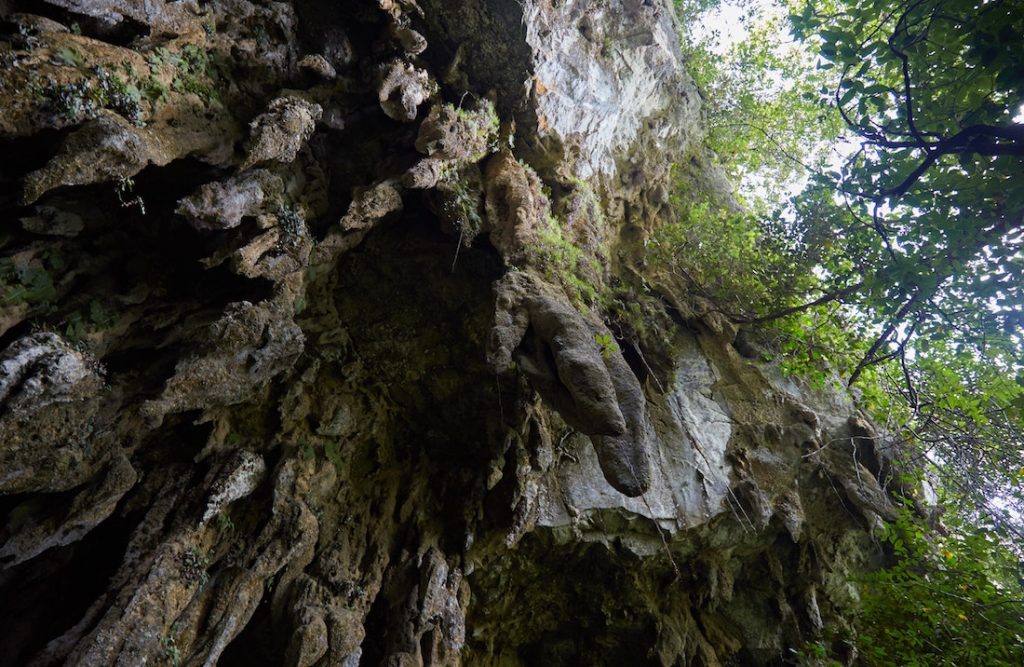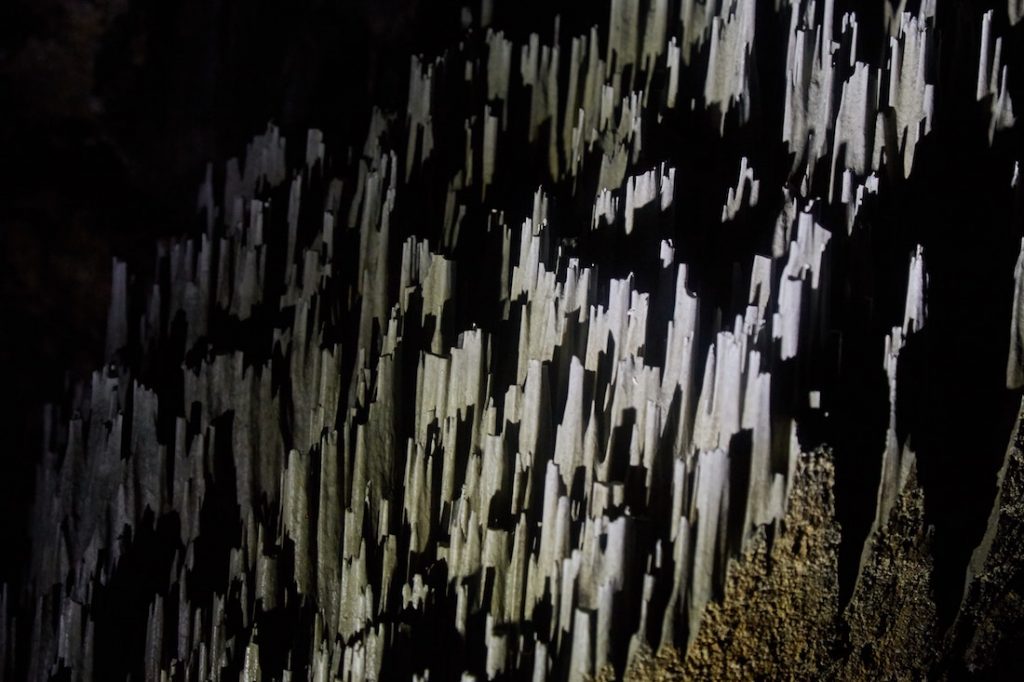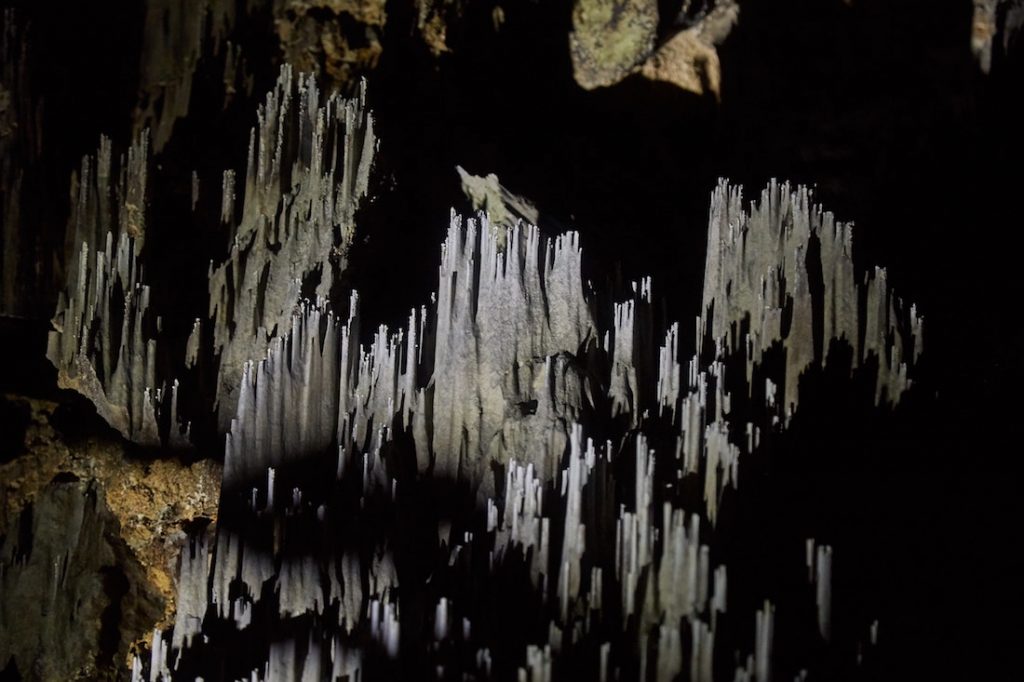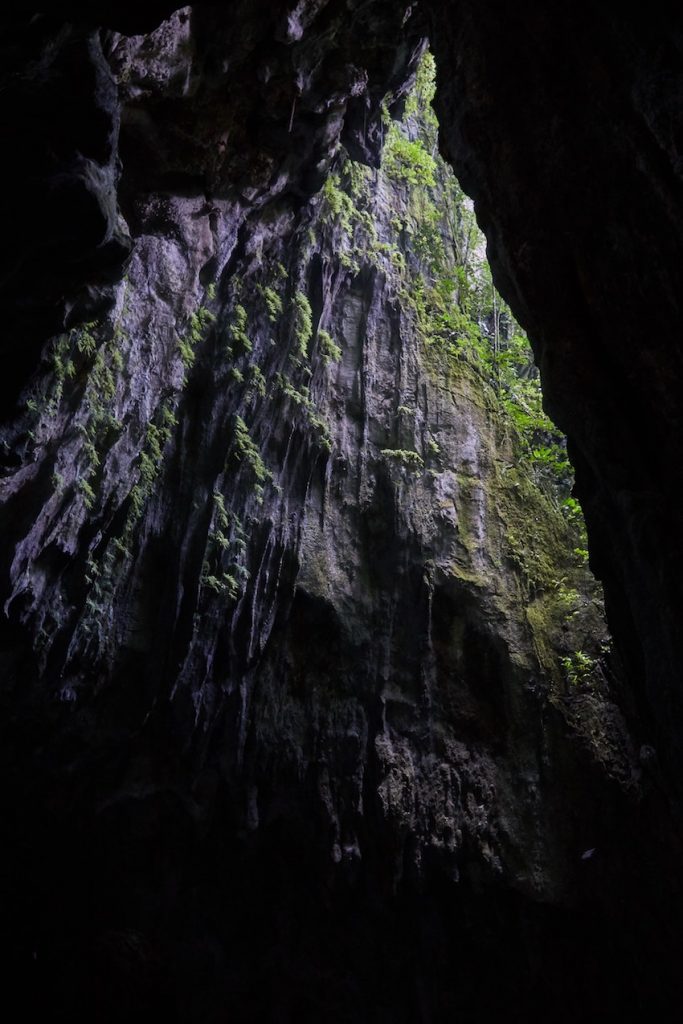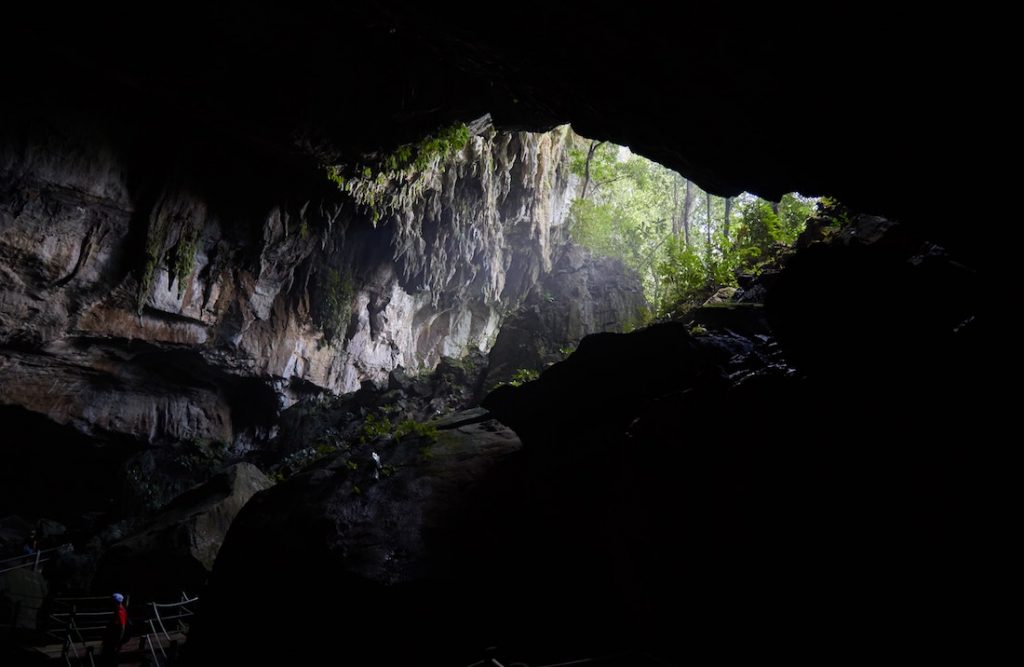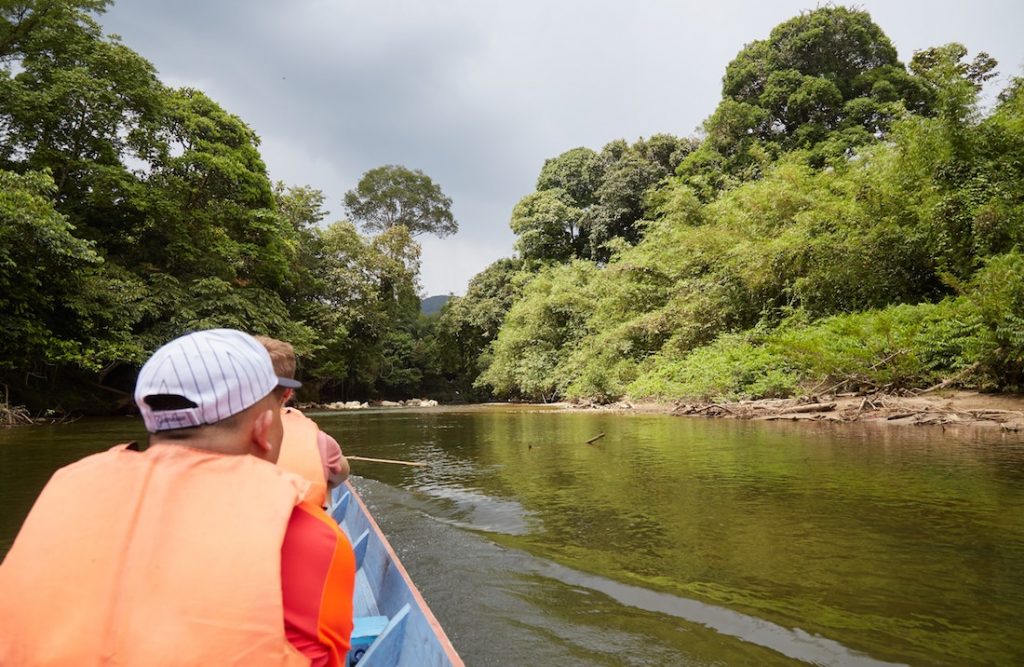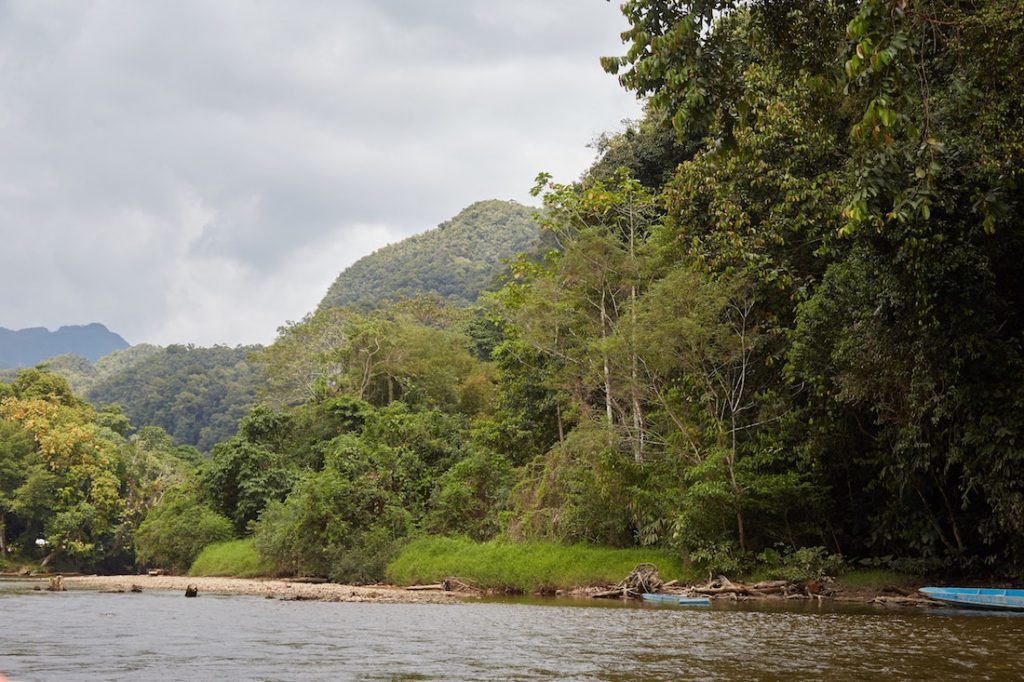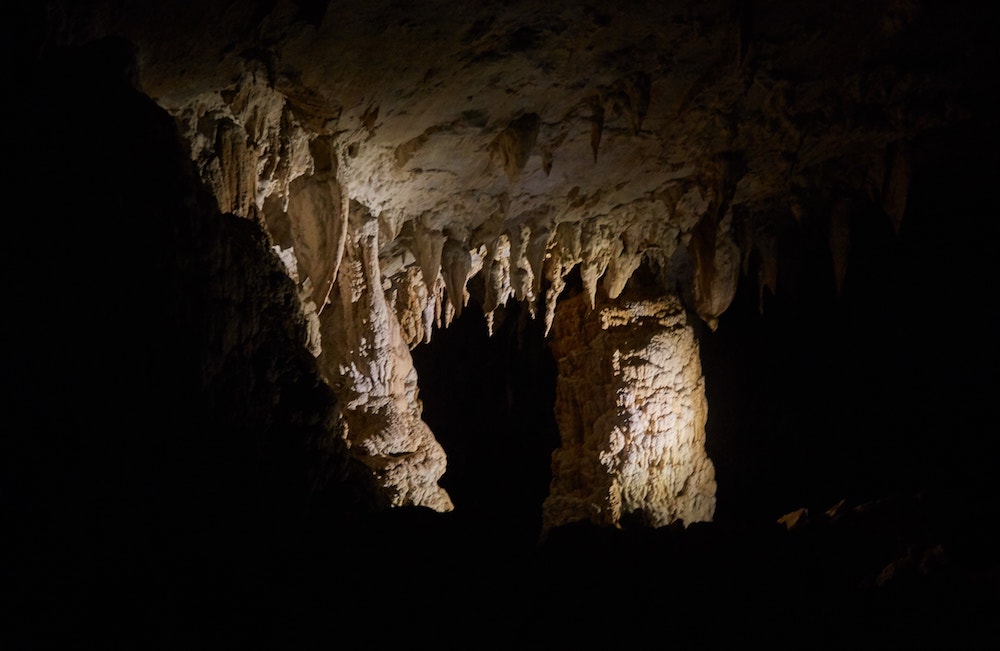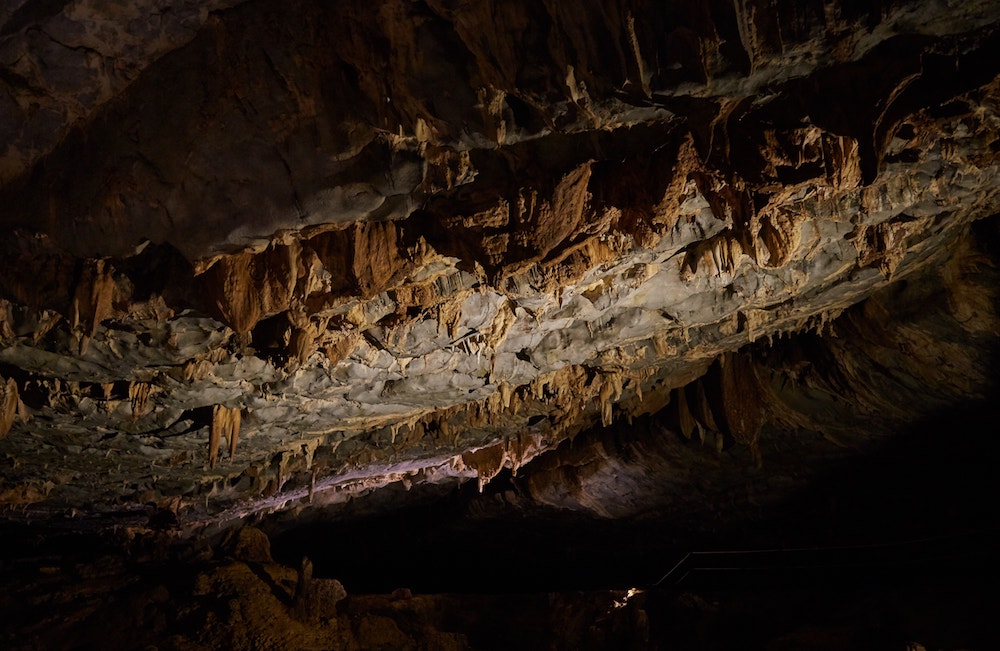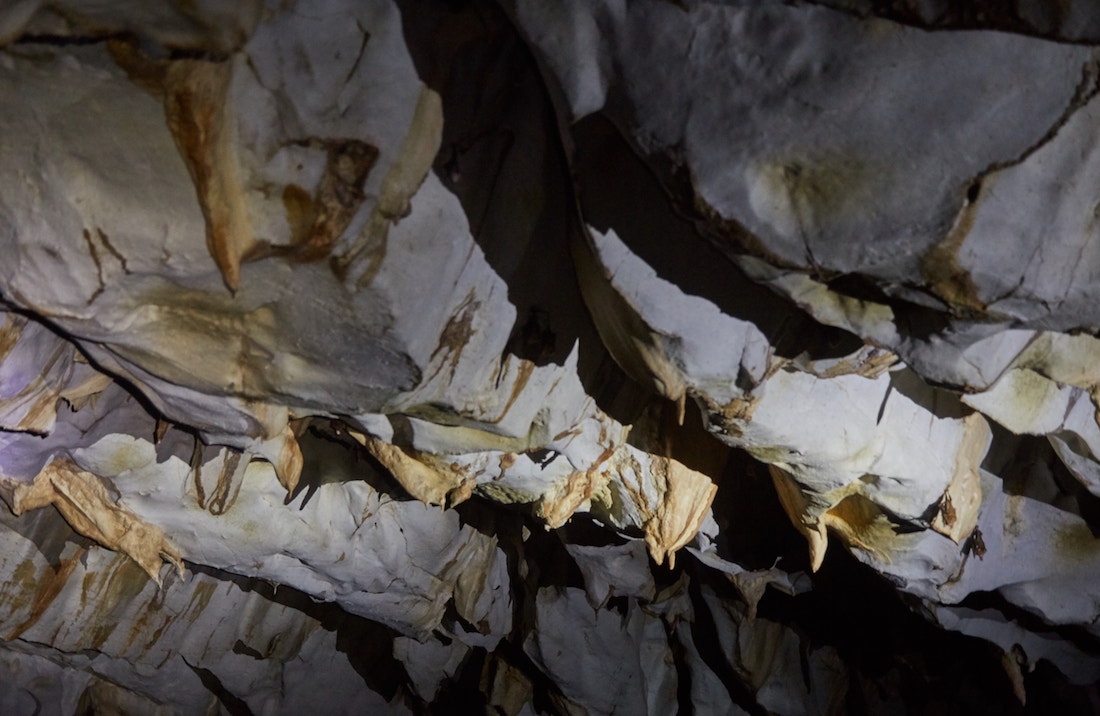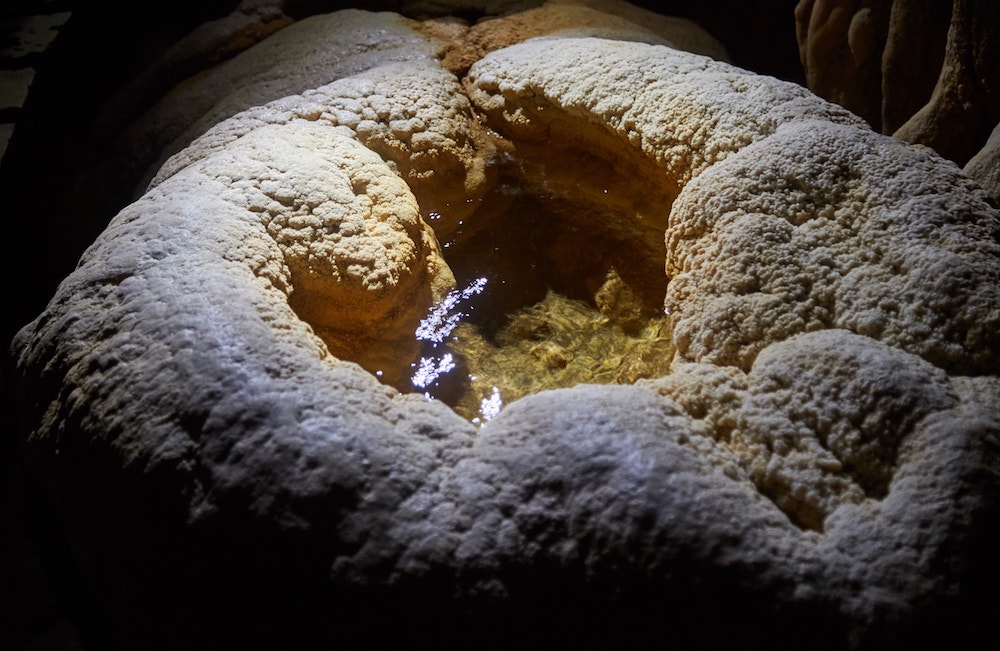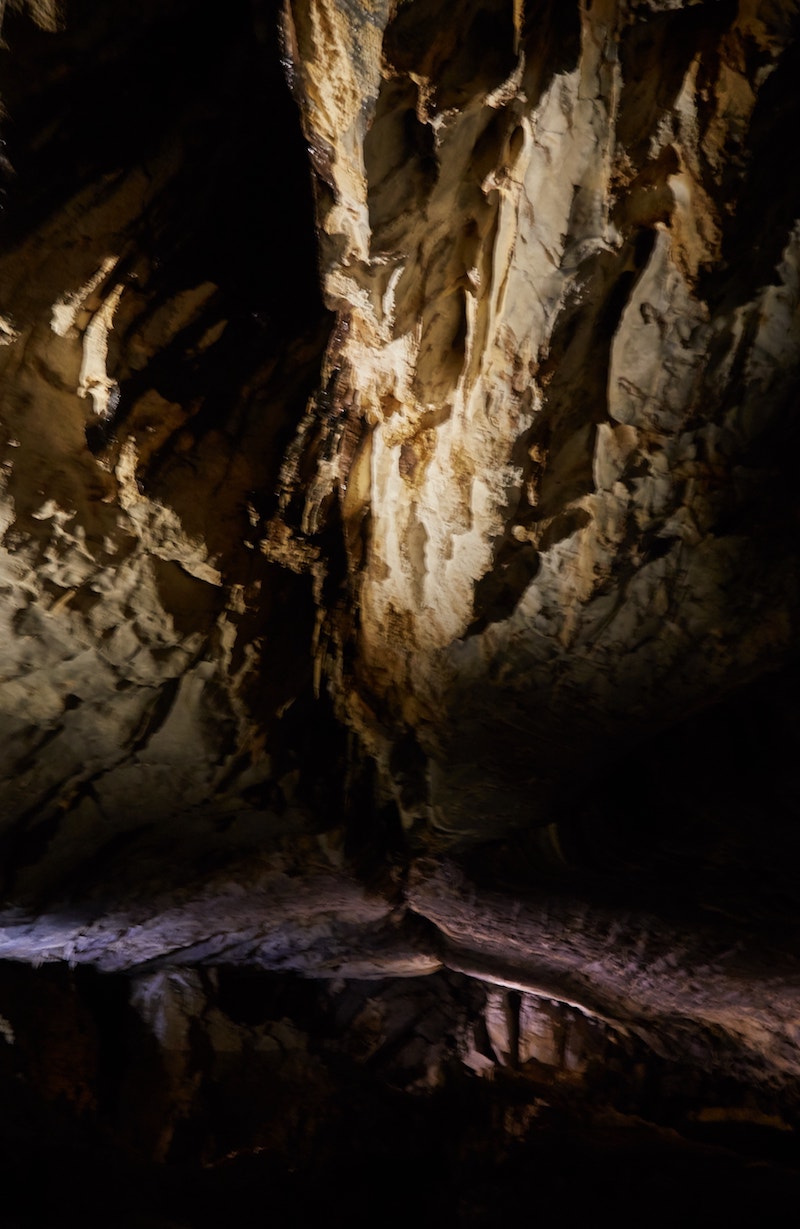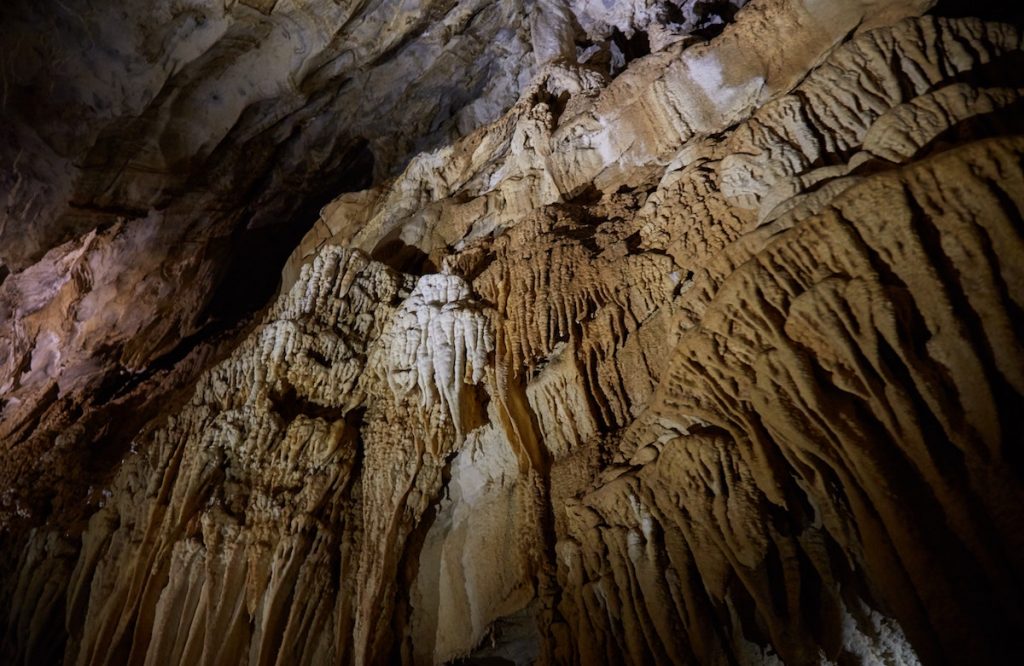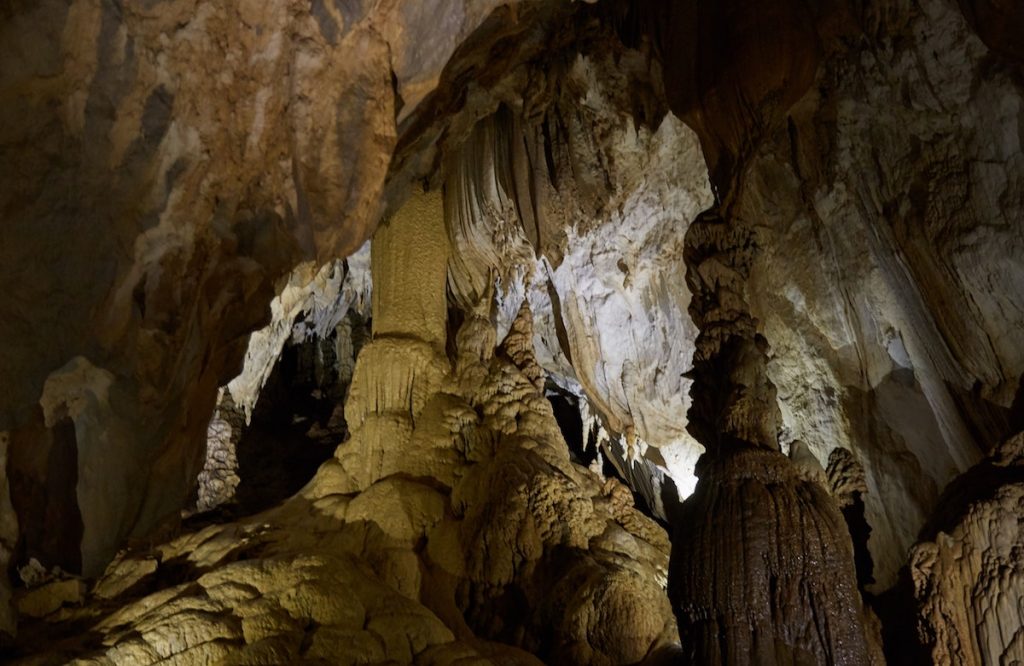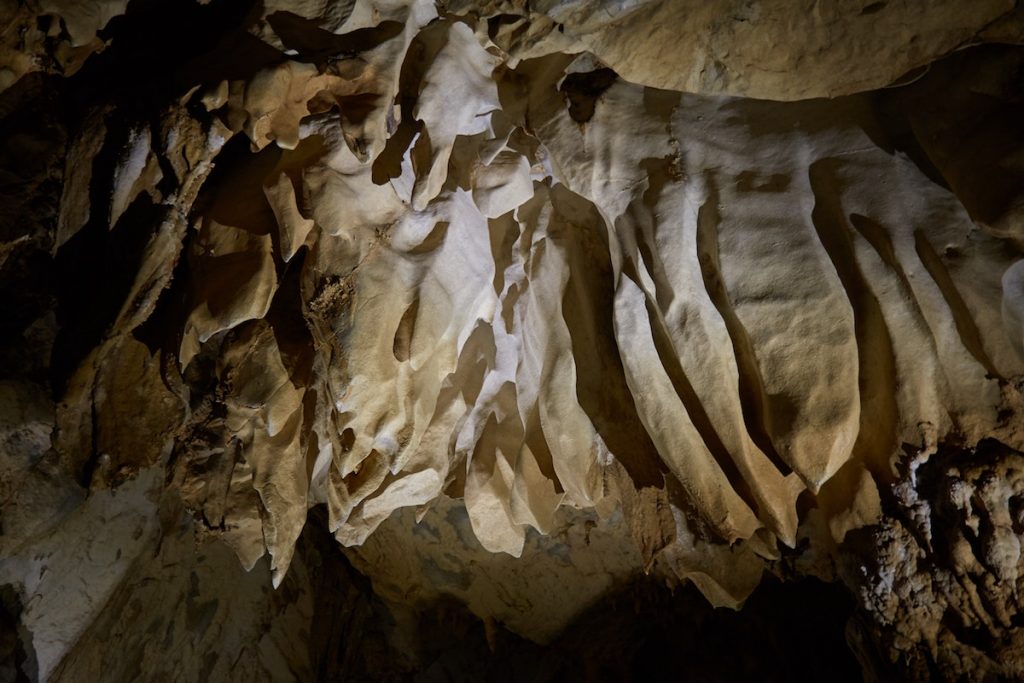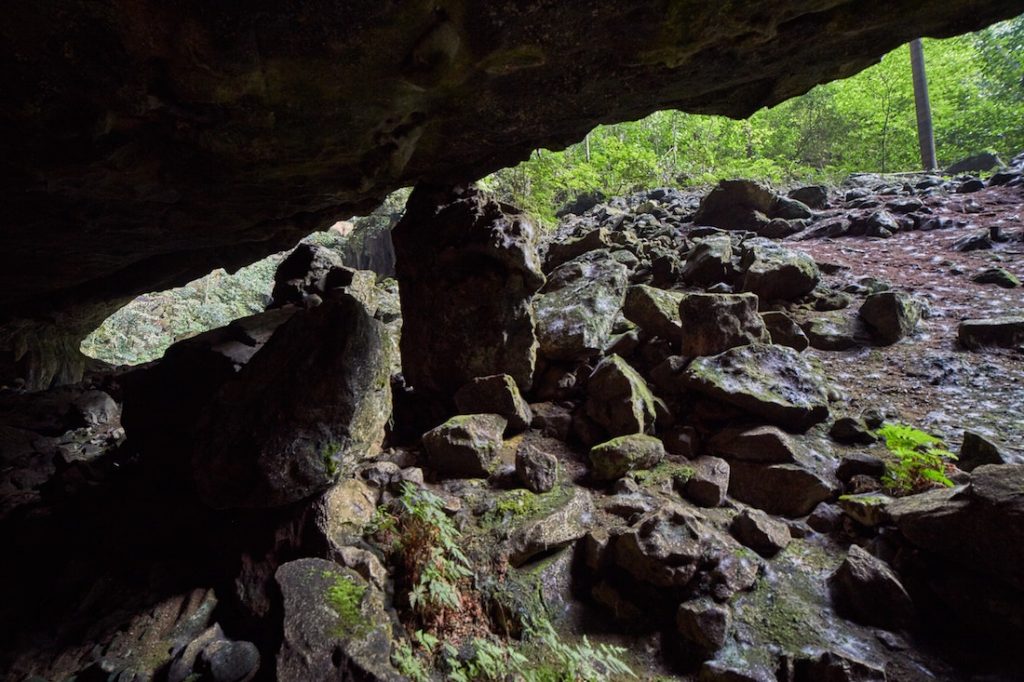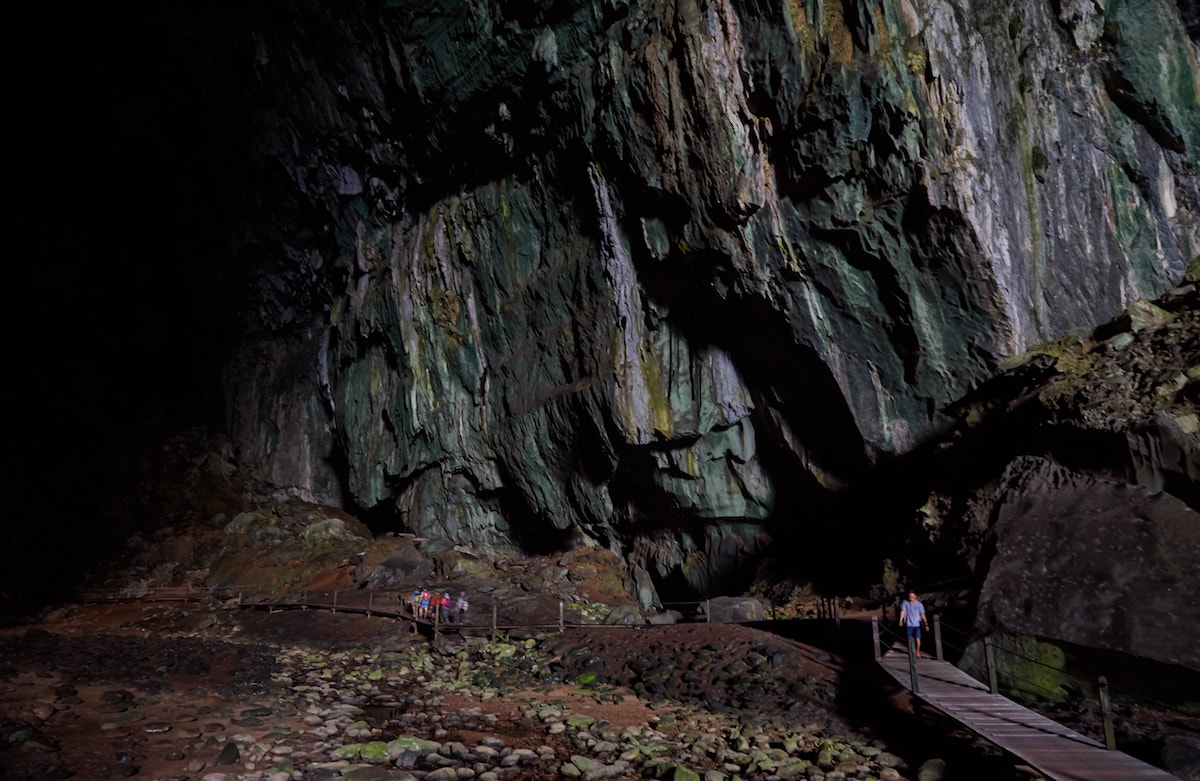Last Updated on: 2nd November 2019, 08:09 pm
Mulu National Park is home to some of the world’s most stunning geological formations – the Clearwater Cave and Deer Cave systems among them. Named after Mt. Mulu, the park is situated between the city of Miri in Malaysia’s Sarawak Province and the country of Brunei. Yet, regardless of its location on the map, the place is so remote that it can only be reached by plane.
The park is a designated UNESCO World Heritage Site and was even featured in the Planet Earth documentary series. But with so many other national parks throughout Borneo, the question remains: is Mulu National Park worth going to? That’s a question you’re going to have to answer for yourself. But over the course of two articles, we’ll go over the park’s main attractions to help you make your decision.
We’ve already gone over Mulu’s outdoor activities, and now it’s time to focus on its caves. But if you’re thinking of visiting Mulu National Park, there are a few things you should know. There are two types of cave experiences: the ‘Show Caves’ and ‘Adventure Caving.’ The Adventure Caves involve lots of climbing in the dark with only the light of your own headlamp. There are various levels of difficulty, but they won’t let you start off with one of the tougher ones.
Visiting the Show Caves, meanwhile, consists of walking along predetermined trails and just admiring the formations. Unless you have prior caving experience, most first-time visitors to Mulu stick with the Show Caves. That’s what I did, and you can learn more about all five in the following article. Understand that all visits to caves at Mulu must be done with a guide, and you can learn more about advanced bookings down below.
What Makes Mulu's Caves Unique?
People from all over the world travel to Borneo to see Mulu National Park’s limestone caves. But what makes them so special?
There are different types of caves throughout the natural world, but limestone caves are always the biggest. As the plates beneath the earth’s surface shift around, brittle limestone, which is naturally deposited in layers, breaks apart. These openings then provide passages which rain or river water can pass through, causing erosion over time.
A cave’s formation largely depends on the qualities of its limestone. All limestone is on the porous side, but the limestone at Mulu is especially so. That means that water doesn’t just go over it, but through it. Especially when the water is slightly acidic thanks to the presence of carbon dioxide. That causes parts of the limestone to dissolve entirely, resulting in massive caves like the ones found at Mulu. Caves passages then continue to change their shape and size thanks to further tectonic plate shifts, which redirect the flow of water.
All in all, there are lots of variables when it comes to how caves are formed, one of which is the presence of bacteria and microorganisms. Perhaps this is why even Mulu caves situated right by one another might look and feel very different.
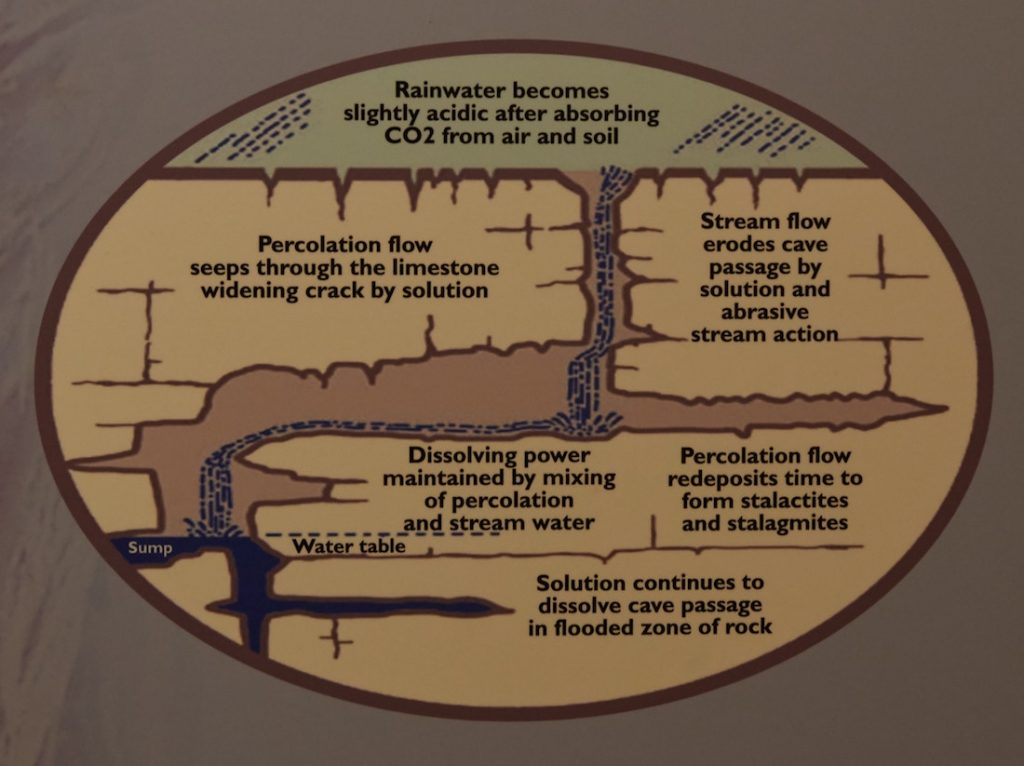
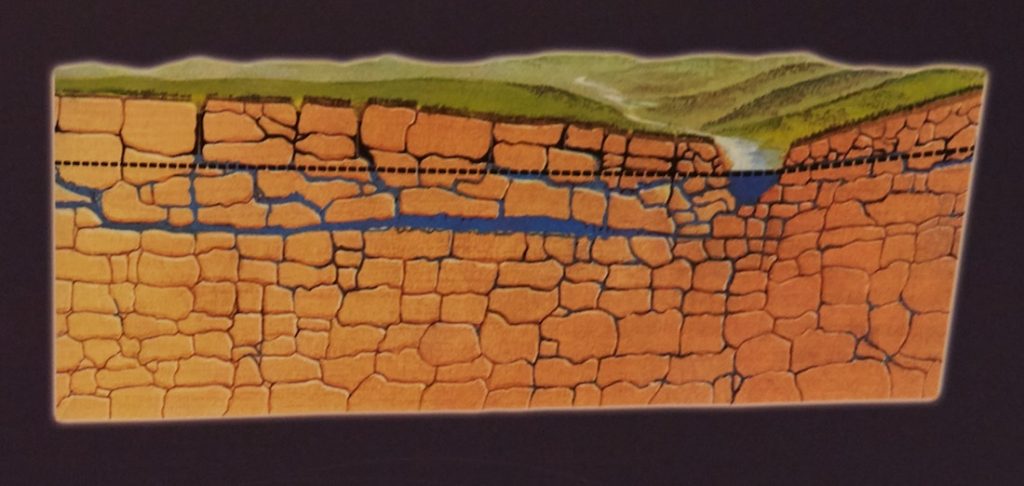
Wind Cave
I started my Mulu cave adventure with Wind Cave, which is always combined with Clearwater Cave. Considering the lack of roads in the region, visitors need to take a boat along the Melinau River to get there. But first, we made a stop at a village of Penan people, just one of Sarawak Province’s numerous indigenous tribes.
While the stop is relatively brief, you’ll find some informational signage about the history, culture and local beliefs of the Penan people. Traditionally a hunter-gatherer society with animistic beliefs, many have since converted to Christianity. As they’ve long relied on the rainforest for their livelihoods, their culture places a heavy emphasis on never taking more than what’s necessary.
If you’re not interested in shopping for local crafts, you can also have a try shooting some traditional blow darts at a target.
Back on the boat, we eventually arrived at the cave in around 5 or 10 minutes. The Wind Cave is named after the gusts of cool wind that can be felt in some of its narrower passages. But the cave is actually just one part of the larger Clearwater Cave system – widely believed to be the longest interconnected system of cave passages in the world!
When visiting the Show Caves of Mulu National Park, one of the first things you’ll notice is the lights. Lights have been carefully placed in certain parts of the cave for added visibility. On the one hand, it adds a certain element of artificiality to the experience. But as many of the details would be incredibly hard to make out without them, they’re largely for the best.
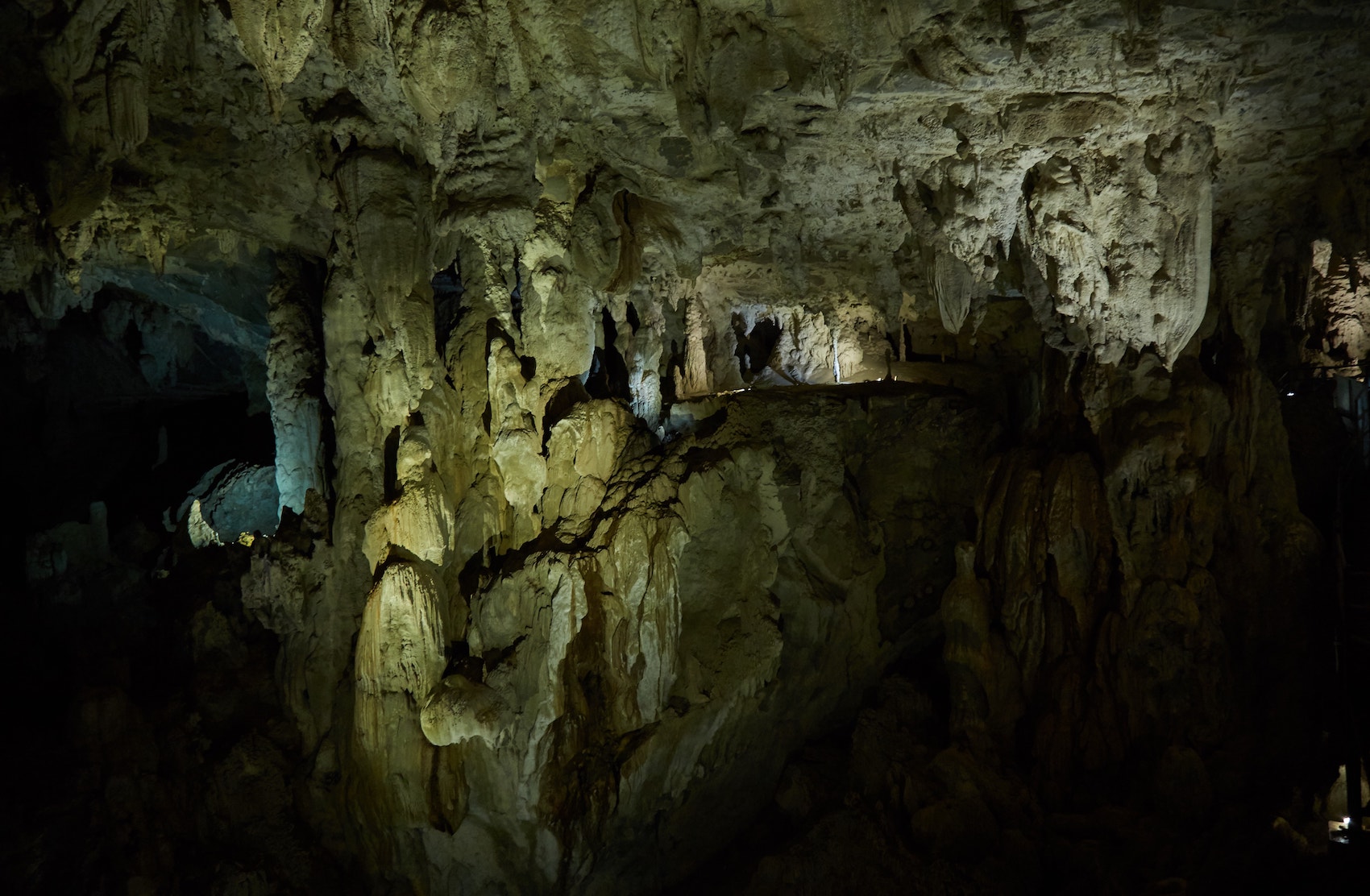
The stalactite and stalagmite formations of Wind Cave are impressive. Later at park headquarters, I’d take some time to educate myself about how such formations came to be.
Stalagmites and stalactites are formed by crystallized calcium carbonate, which forms when limestone comes into contact with the carbon dioxide of slightly acidic water. Small scalloping patterns in the rock, meanwhile, tell us that the water which eroded it used to flow over it very quickly.
Our group consisted of 8 or 9 people, together with a guide. The paths are predetermined, and no special skill or technique is required to traverse through the cave. Think of it more of a pleasant walk than a strenuous hike.
While Wind Cave isn’t even considered one of the most impressive caves of Mulu, I was well pleased with my first taste, already looking forward to what was to come.
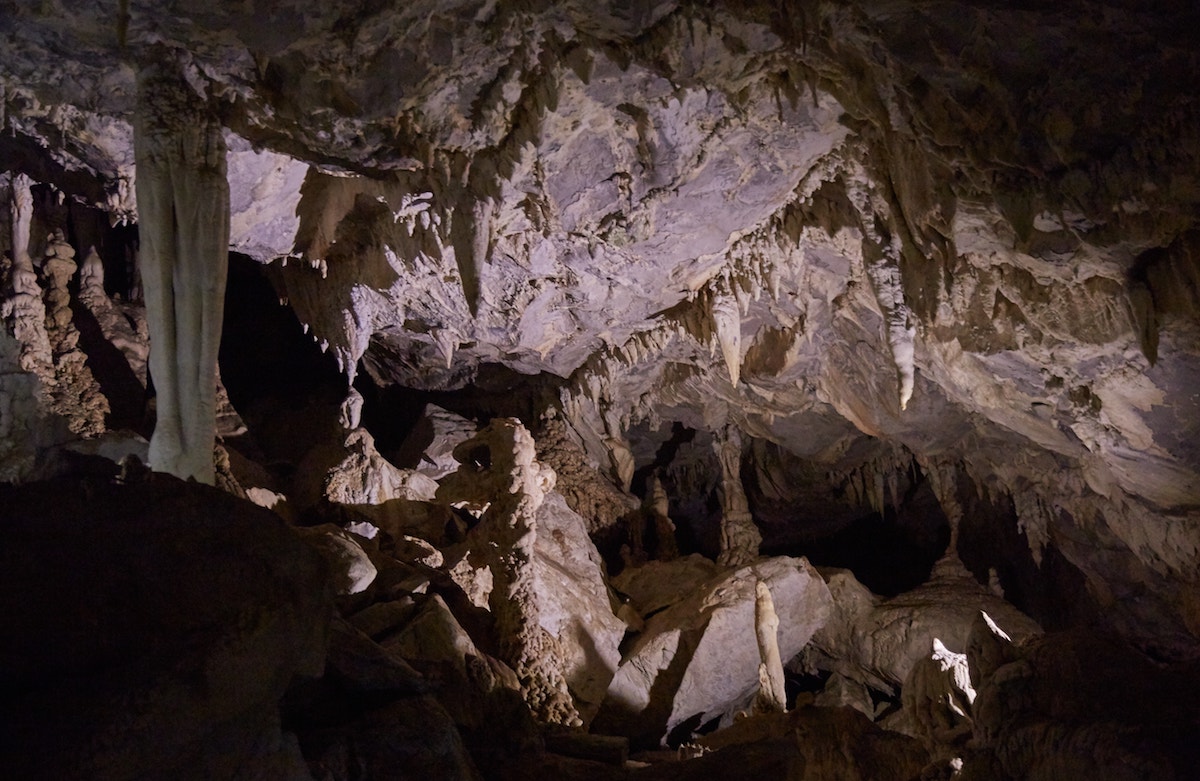
Clearwater Cave
Exiting Wind Cave, the entrance to Clearwater Cave is just about a 5-minute walk away. But those who prefer to take the boat over also have that option.
As mentioned, Clearwater is considered the longest cave system in the world. In total, it measures out to around 107km! A river emerges out from the bottom portion of the cave, hence its name. Visitors also have the opportunity to take a swim in the pool by the entrance. But first, it was time to step inside.
The cave is fascinating from the very beginning. Outside the entrance, multiple tiers of stalactites hang down like fangs. Many of Mulu’s strange formations have an air of mystery about them. Walking through the caverns, you’ll constantly encounter new and unusual formations, sometimes unique to just one particular part of a certain cave. According to the informational signs inside the caves themselves, even the experts aren’t entirely sure how all of them developed!
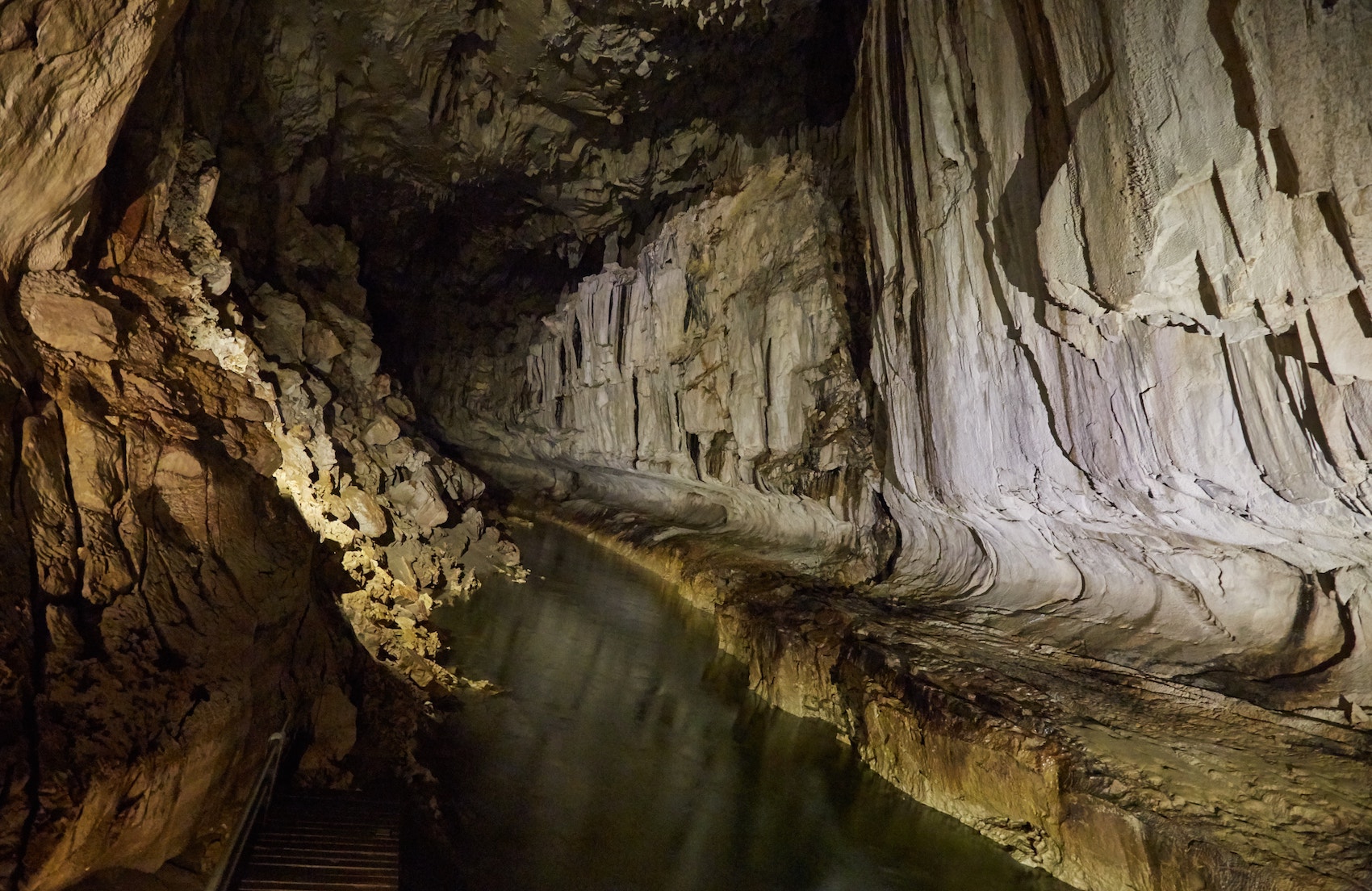
The water outside flows well into the center of the cave, forming what’s referred to as an ‘underground river.’ But one of the most unusual portions of the Clearwater Cave are these limestone needles pictured below. In fact, they closely resemble a miniature version of the Pinnacles.
But how did they form? According to a documentary about the first explorations of this cave in 1980, they were formed by tiny organisms stimulated by daylight. If you look closely, you’ll notice all the needles pointing toward a large opening up above.
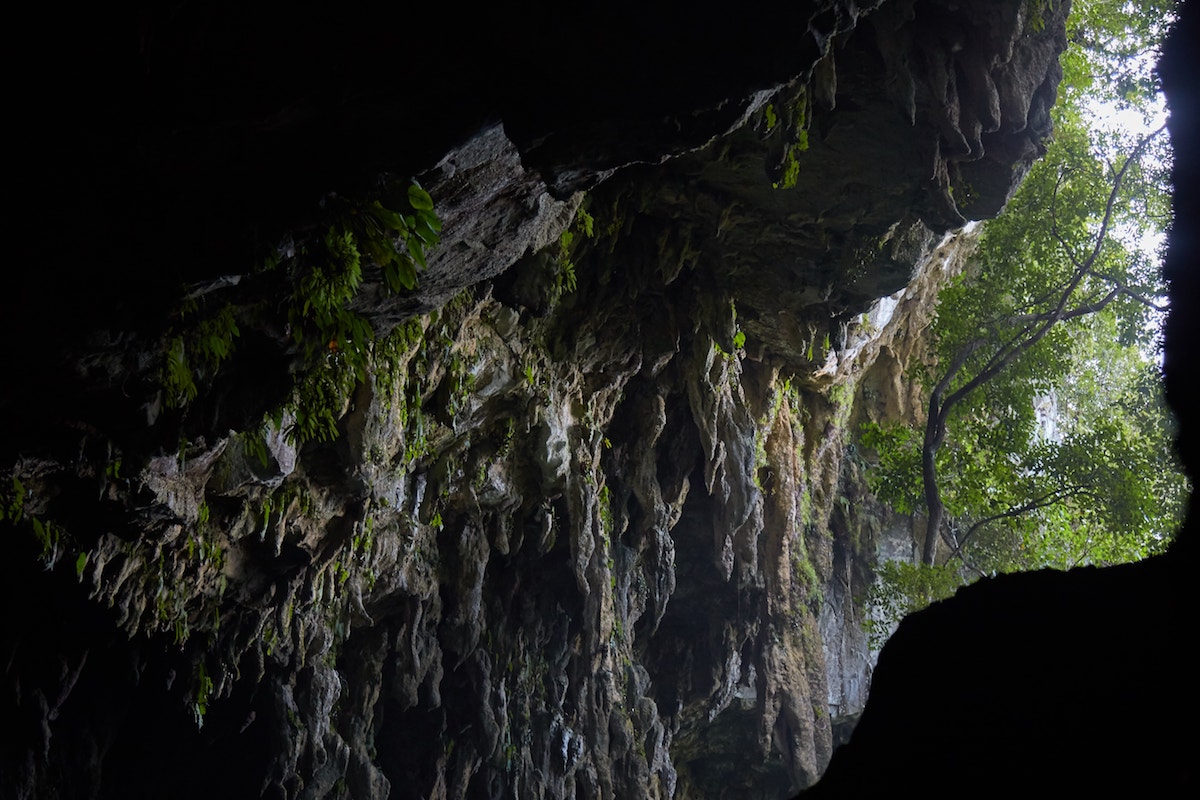
Lagang Cave
Lagang Cave can be seen as part of a special tour called the ‘Fastlane.’ I’d not heard of this cave, nor the excursion, until some people I met on the Clearwater Cave tour told me about it. It was a much more intimate experience, they said, with most of the cave being completely pitch dark. And so, I asked at park headquarters if there were any openings for that afternoon, and luckily there was.
Yet again, I found myself on a river boat, but this time with a much smaller group of 4. Supposedly, the limit for this tour is as high as 12. But what makes it unique is that only one group can enter at any given time (usually there a few groups wandering through a cave at once). That way they can keep most of the cave completely dark.
The tour, like all the others, of course, is led by a licensed guide. But this time the only way to see the rock formations was with the light of our own torches. But even here, there is a large section with lights similar to the other caves. And as much fun as it is to wander around in the dark, photography would be nearly impossible without the lighting system.
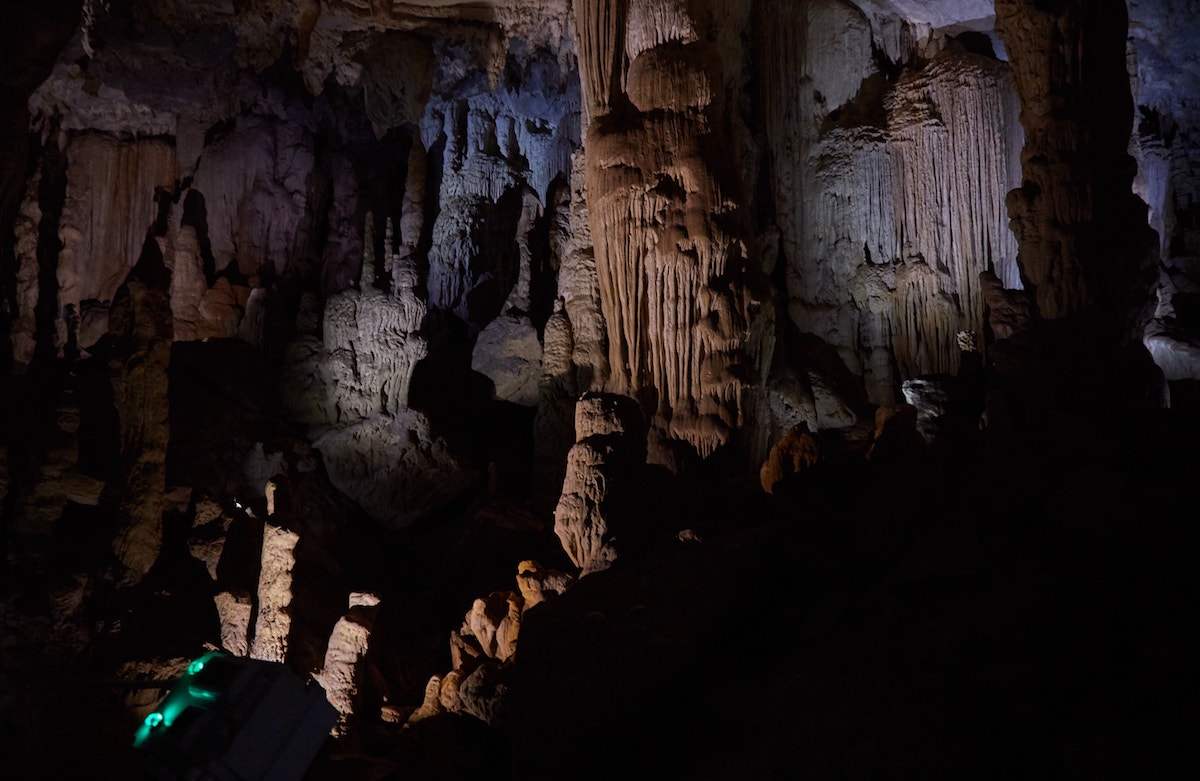
All in all, paying an extra RM 65 for the tour was well worth it. If you’re lucky, you might even spot some wildlife, like small snakes or crabs.
*Note that Lagang Cave is also used for Adventure Caving. That means that some reviews or write ups you might find online are about Adventure Caving rather than the Fastlane tour described above.

Lang Cave
Like the first two caves mentioned above, Lang Cave and Deer Cave are almost always visited together. Despite this, the two caves are nothing alike. Lang Cave’s defining characteristic is its squid-like stalactites. The formations are generally light in color and they have a certain smoothness about them in comparison with other caves.

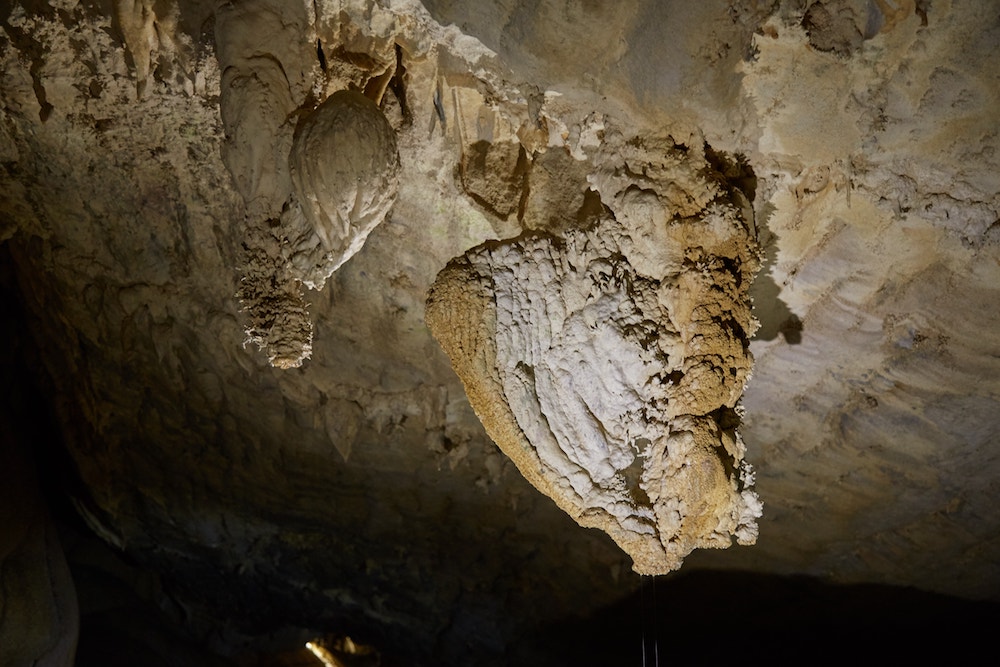
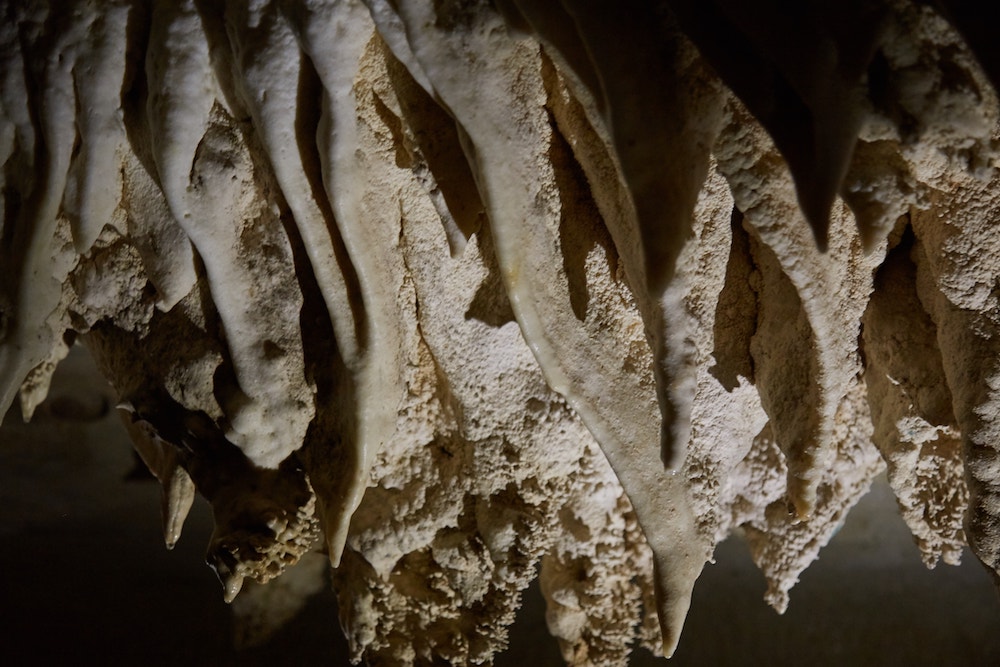
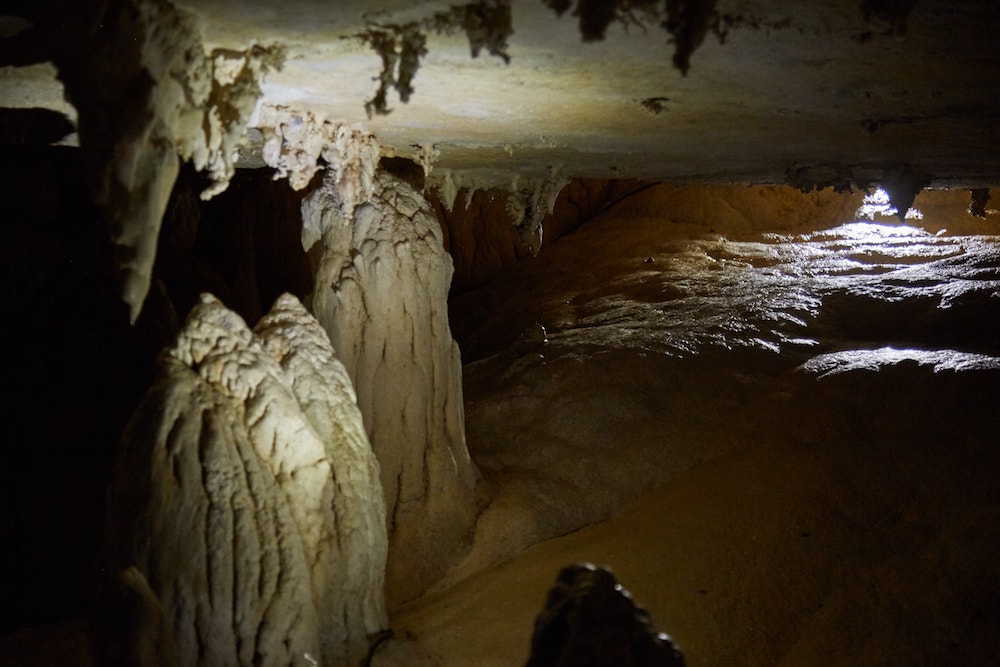

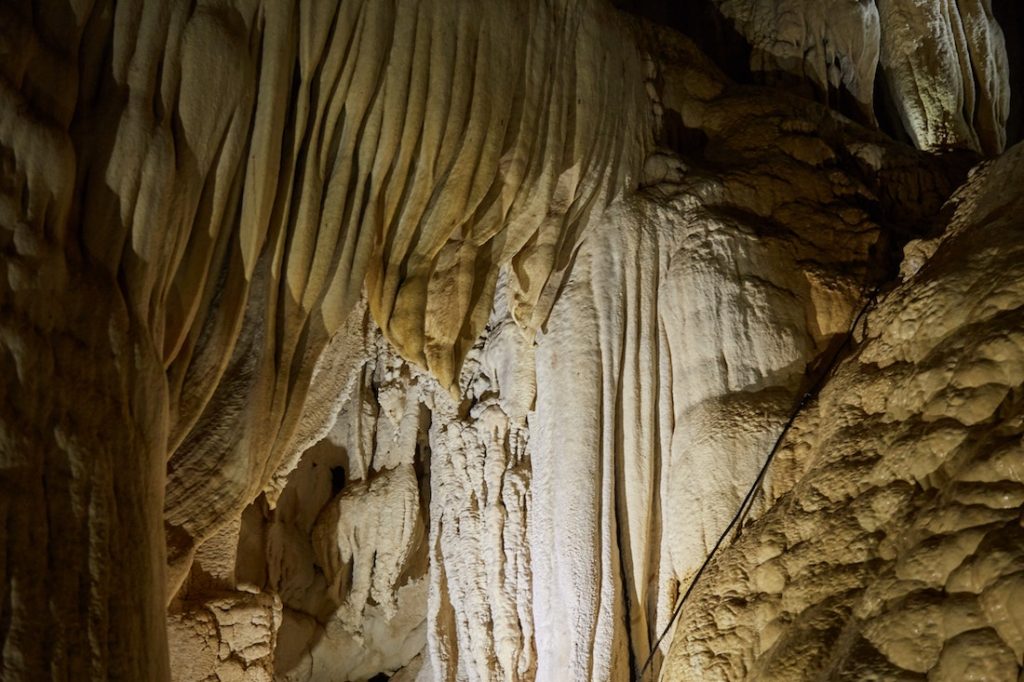
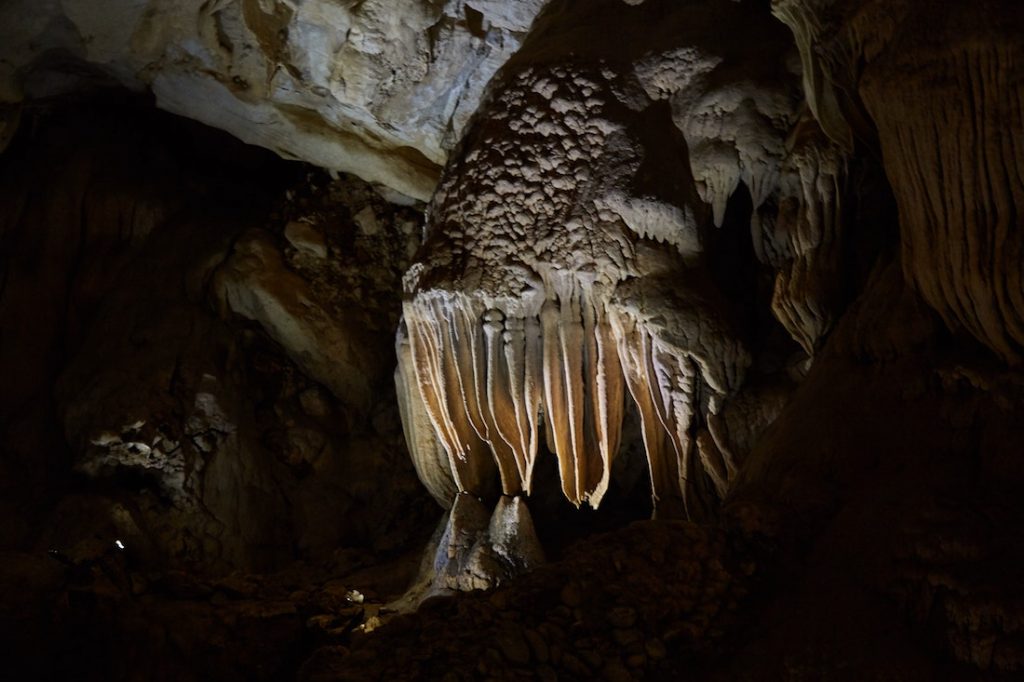
From certain angles, some of the stalactites resemble alien creatures. One part even looks exactly like H.P. Lovecraft’s Cthulu!
Meanwhile, water is constantly dripping down from up above, forming numerous pools of water on the floor below. Seeing this mechanism in action helps you more easily picture the long, slow erosion process that helped form these caves over centuries.
Deer Cave
Deer Cave is considered by many to be the top highlight of Mulu National Park. In a previous article, I wrote about the Bat Exodus which takes place nearly every evening. The roughly 3 million bats (divided among 12 species) emerge from this cave, which also happens to be the largest cave entrance in the world. Though I saw the bat spectacle on my first evening in Mulu, I wouldn’t actually go inside the cave until a few days later. And believe me – the hype is real!
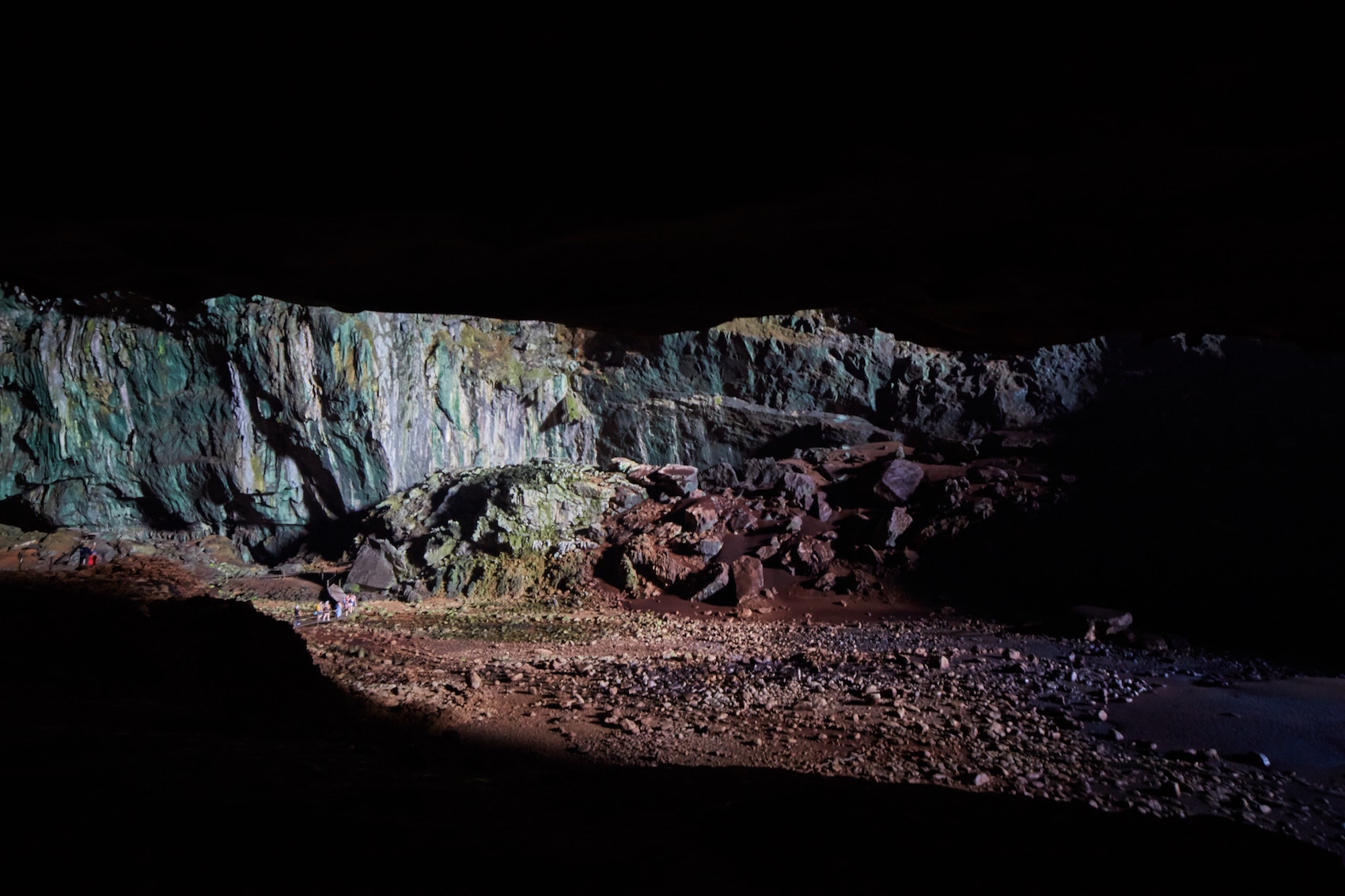
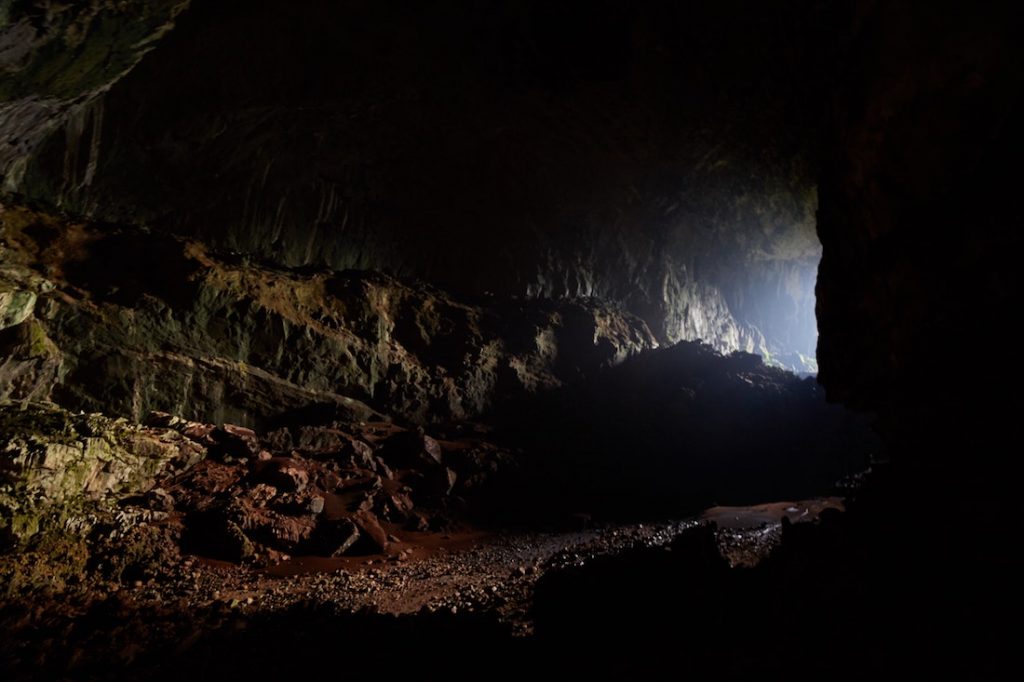



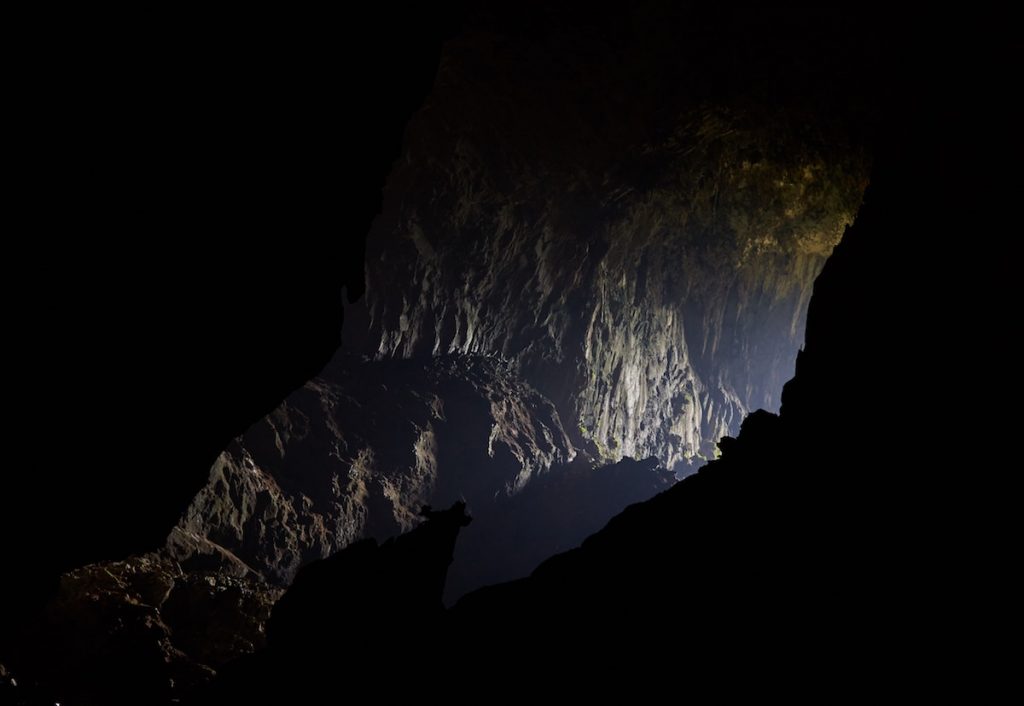
The end of the walk concludes in another opening called ‘Garden of Eden.’ The greenery, combined with the light shining in through the large, misty passage, really does make one feel as if they’ve encountered a portal to another world.
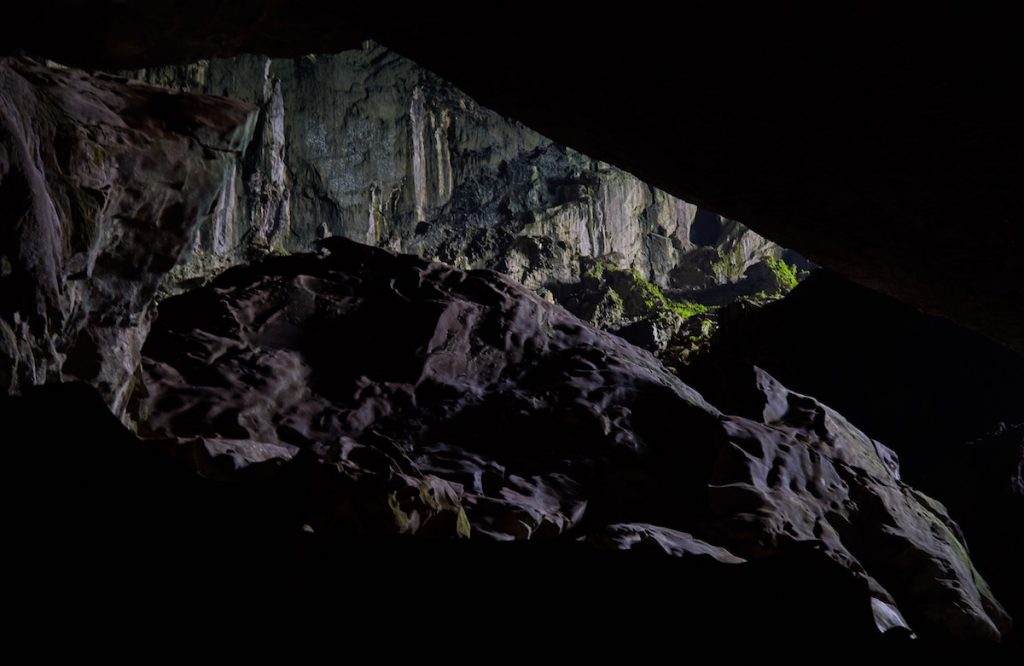

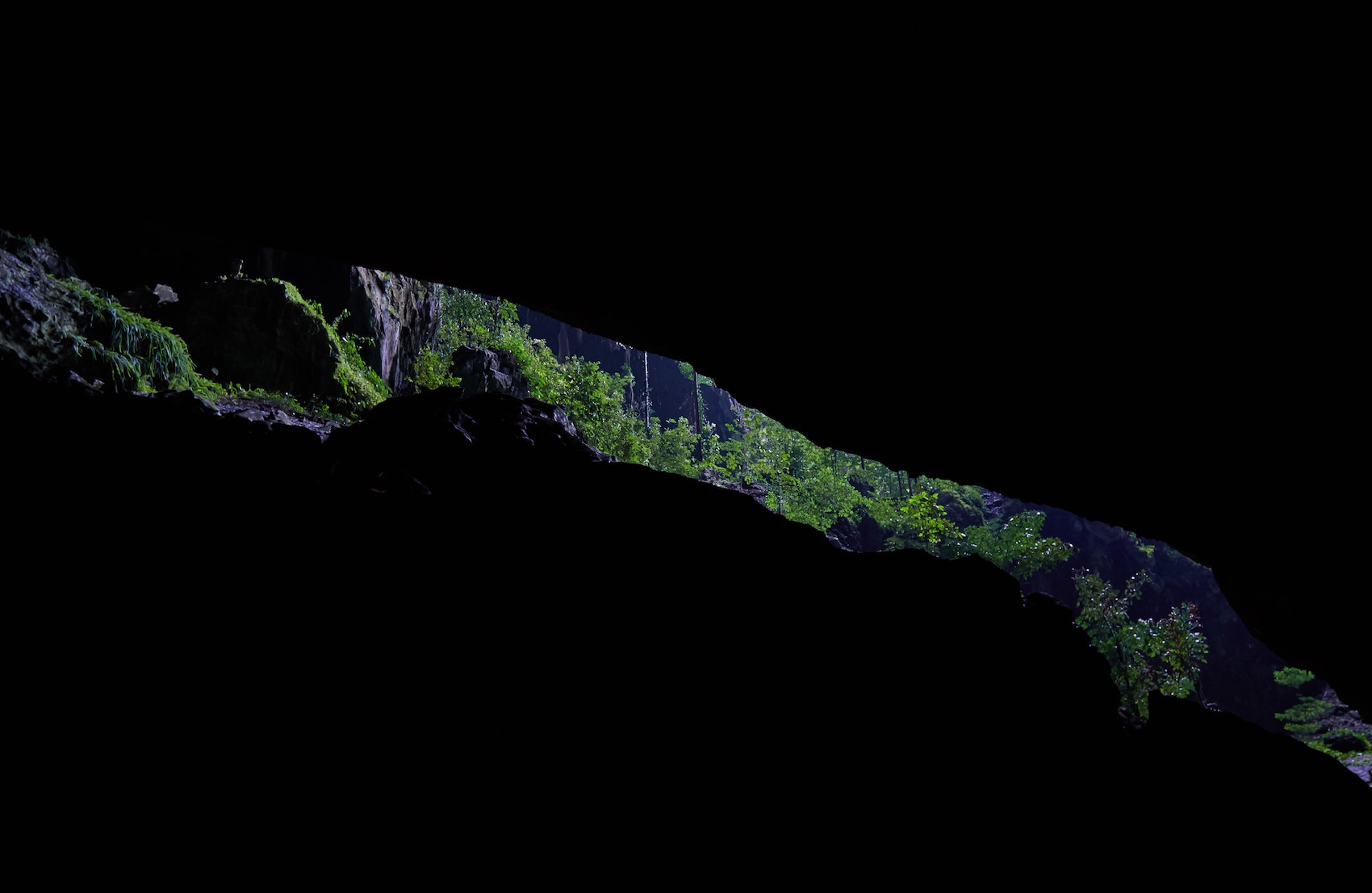
The tour of Lang and Deer Caves starts in the afternoon, as they’re meant to conclude right as the Bat Exodus is about to start outside. I couldn’t pass up on the opportunity to see one of Mulu’s most stunning spectacles for a second time. Though it was significantly cloudier than my first experience, I wasn’t disappointed. While there are plenty of interesting sights around Mulu National Park, few could be considered as breathtaking as Deer Cave – both inside and out.
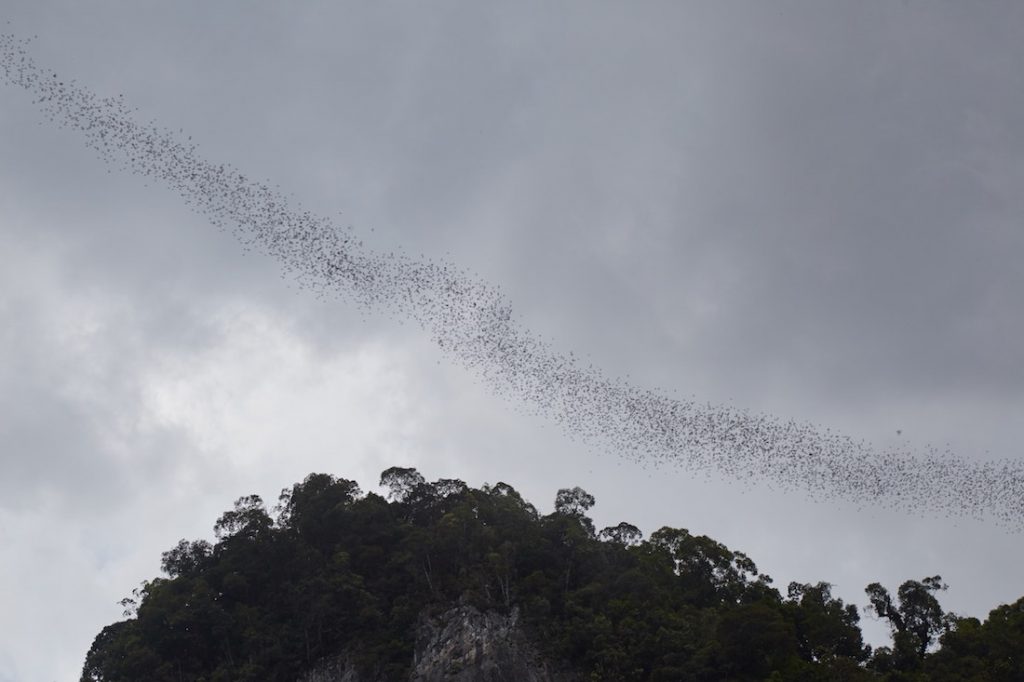

Additional Info
Mulu National Park is so remote that it can only be reached by plane.* Direct flights leave from Kuching, Miri and Kota Kinabalu via Malaysia Airlines. My round trip flight from Kuching cost me 333 ringgit (roughly $88) in total, but prices will likely vary depending on time of year.
This added fee is something you need to consider when deciding how badly you want to visit the park. Also understand that delays are common due to weather issues, so don’t schedule too many guided tours on your days of arrival and departure.
The airport, at least, is so close to the park, that in many cases you’ll be able to walk right to your accommodation!
*Technically, there is another way to enter and exit the park. It’s called the Headhunter’s Trail. But it’s a grueling multi-day trek that should only be thought of as an activity in and of itself, and not as an alternative to plane travel. To do it, you’d need to book a tour that may end up costing more than the plane ticket.
There are a number of accommodation options in and around Mulu. The official web site only mentions their own accommodation within camp, but there are plenty more options in between the airport and park entrance.
If you have the cash to spend, Mulu even has its own Mariott! While it’s some distance from the park compared to other options, that doesn’t matter because guests have the luxury of going back and forth via free shuttle.
When searching for my accommodation, I was well aware that there were other options outside the park (aside from Mariott) that were technically a better value. Ultimately, though, I decided to go with ‘official’ accommodation. Reading reviews of some of the other hotels and guest houses, guests complained about having to walk back from camp for up to 20 minutes in the pitch darkness, which doesn’t sound like much fun after a tiring day.
Being on a budget, I opted for the hostel. At RM58 per night, it’s a fraction of the private rooms available within the park. Normally, I hate staying in dorm rooms because of cramped space and (in all likelihood) inconsiderate roommates stumbling home drunk at 3am.
But national parks are different, as everyone is just so tired by the end of the day. Everything was fine with the hostel at Mulu. It certainly wasn’t luxurious, but I slept well each night and I don’t recall ever having to wait too long to hop in the shower. One thing I enjoyed about the experience was how there were a number of visitors from Sarawak or Sabah Provinces coming to enjoy the park as well. So in addition to meeting people from around the world, it was a good opportunity to make some local friends.
I later met someone who was staying at some type of homestay just outside the park entrance – just as ideal a location as the hostel. Unfortunately, I can’t recall the name, but you may want to look out for it when doing your research.
BOOKING TOURS: Entry to the park itself costs RM30 for adults. But to participate in many of the activities around the park, individual bookings are required for each. The reason is that certain things can only be done with a licensed guide, which also means that these activities incur their own individual fees.
When it comes to booking tours of the ‘show caves’ or something like the Canopy Walk, it’s best to do it in advance. Even if you’re traveling in a low touristy season, when there’s not a particularly high chance of a tour getting booked up, it’s best to just do it for the peace of mind. It would be a waste to travel so far, only to not end up getting to do the things you hoped for.
While these articles are intended to help you decide what you may or may not be interested in, one of the best ways to figure things out is to simply send park headquarters an email. The staff is pretty helpful when it comes to planning out an itinerary for you if you tell them how many people you are and how many nights you want to spend.
With all that said, I did change my itinerary slightly on the fly after hearing some recommendations by people who’d already been there for a few days. Luckily, I was able to book one new tour and reschedule another with no issues.
FOOD: Park headquarters features its own restaurant. The food is quite good, but as you would expect, very pricey by Malaysian standards. Note that if you’re staying at Park accommodation, you get a free breakfast voucher every morning, though you’ll still need to pay for lunch and dinner on your own.
If you’re on a budget, there is a much cheaper restaurant just outside the park. Just walk across the walking bridge over the river connecting the park with the outside world, and you will immediately find it on your left. On some nights it does get pretty crowded, however.
PACKING TIPS:
- Before your flight, withdraw all the cash you think you’ll need for the duration of your trip. If you need to book a last-minute tour, you should be able to use a credit card at the park office.
- There’s no cellphone reception at Mulu, even if you have a local SIM card. For WIFI access, you must pay RM5 for a single day of use, and even then there’s no guarantee it will work. I saw my trip to Mulu as a rare chance to go completely internet free for several days. If you plan to do this as well, be sure to let your close friends and family know you’ll be out of touch!
- Don’t forget your own torch, preferably a headlamp type.
- You will also need a poncho, one that you can fold up and take with you in your bag, as a downpour could occur at any moment.
- If you’re staying at the park hostel, bring your own lock. While lockers are provided, locks aren’t.
- You will also want to bring what you’d typically bring for any outdoor and nature activities, like a hat, sunscreen and bug spray. Personally, I didn’t feel like mosquitos were a problem and was fine without insect repellent.
Before your trip, you should know that tripods are banned at all Mulu caves. Even if you email them asking for permission, they’ll likely tell you no. That means regardless of what type of camera you have, you’ll have to shoot entirely handheld.
In the brighter parts of the Show Caves, lighting isn’t a huge issue, but getting wide angle shots of Deer Cave was especially challenging. Furthermore, the humidity of Borneo tends to fog up the lenses.
You might also find that your group tours of the caves are a little rushed. You’ll probably want to go on ahead by yourself if you’re determined to get some good shots. Take as many shots as you can with different settings. Quantity is key, as you won’t really know how things came out until you see them on your computer. As you’ll most definitely need to boost up the ISO, it also helps to have a decent photo processor that can help remove some of the extra noise.
And if you’re visiting other parts of Borneo to see some animals, wildlife photography is one case where you’ll absolutely need a zoom lens. Personally, I’d recommend looking for something at least 200mm, though 300mm or higher is ideal. If high-end lenses like the Canon L series (or whatever brand you use) are out of your budget, consider an alternative by a brand like Tamron.
The Tamron AF 70-300mm f/4.0-5.6 SP Di VC USD XLD (intended for full-frame cameras) is what I used for some of the shots above and most shots of Bako. You can find both Canon and Nikon versions of it, which, while not incredibly cheap, are only a fraction of what the elite lenses cost.
If you don’t have a DSLR, you might want to consider investing in a cheap one with a cheap zoom lens just for this trip. Even that would be better than relying on your phone. During my time in Borneo, I came across a lot of people with smartphones or point-and-shoots who were very disappointed that none of their shots of the animals were coming out.
When bringing a camera and gear to such a humid and rainy place like Borneo, there are a few other accessories you’ll want to bring along. One is a large packet of silica gel, which you can keep in your camera bag to prevent your lens from getting too fogged up in the humidity.
You also want to get some kind of dry bag in case you get caught in a downpour. And if you still want to snap some photos in the rain, definitely get a plastic sleeve covering to place over the camera for protection.
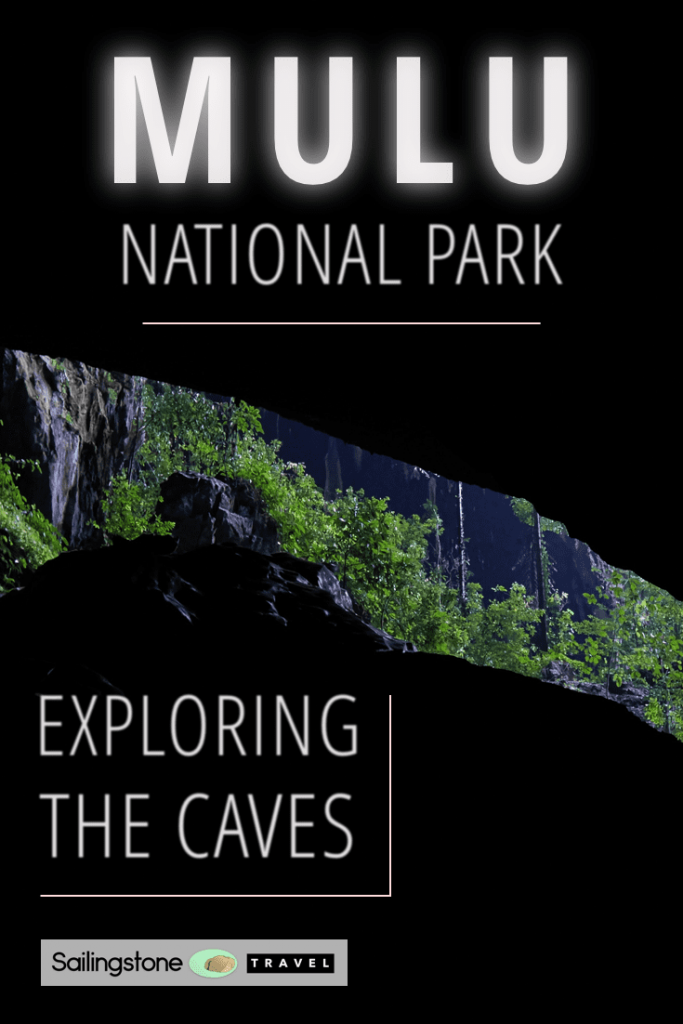
Pin It!

